ANDALUSIA
Seville– Granada – Cordoba
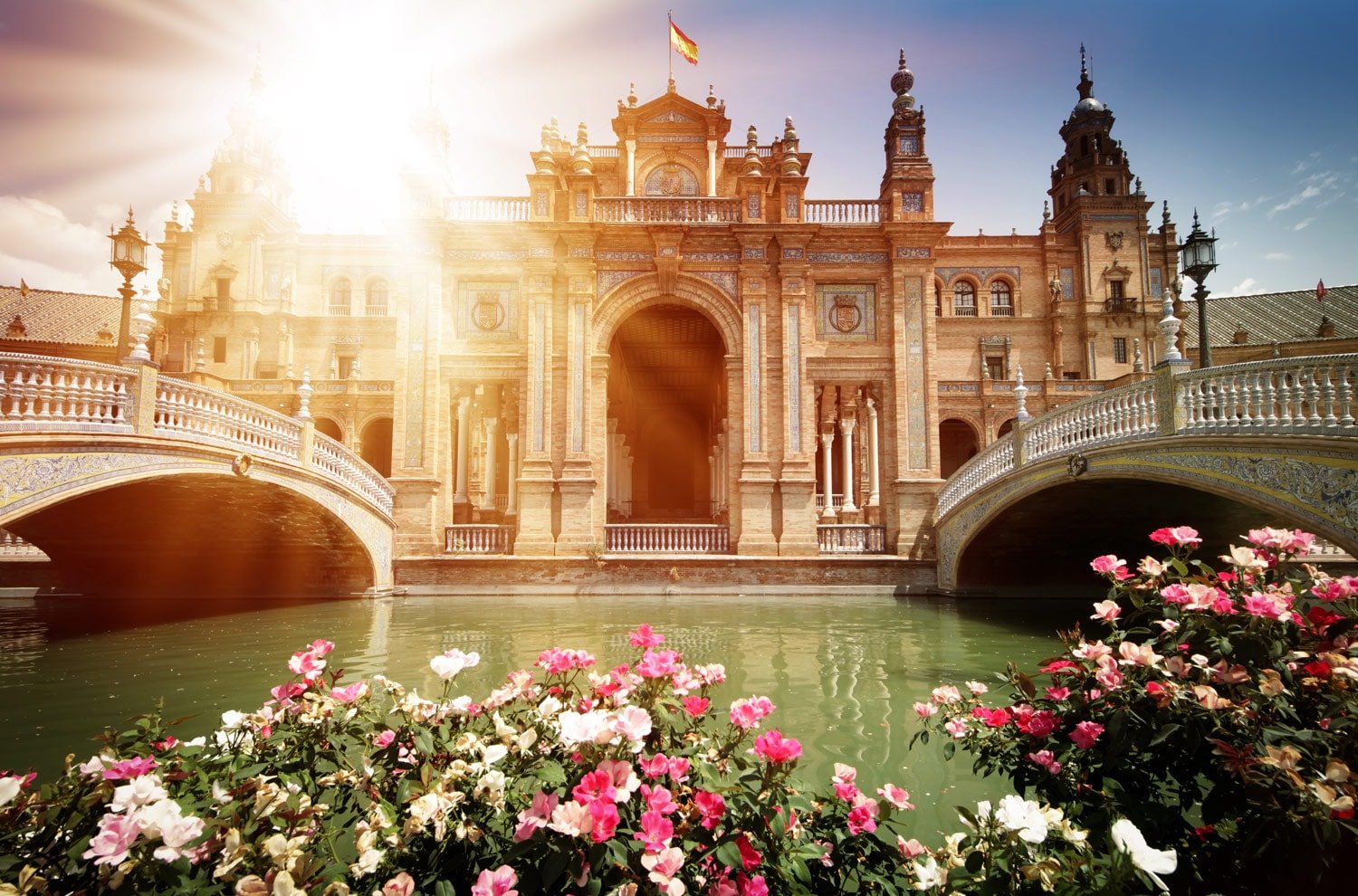
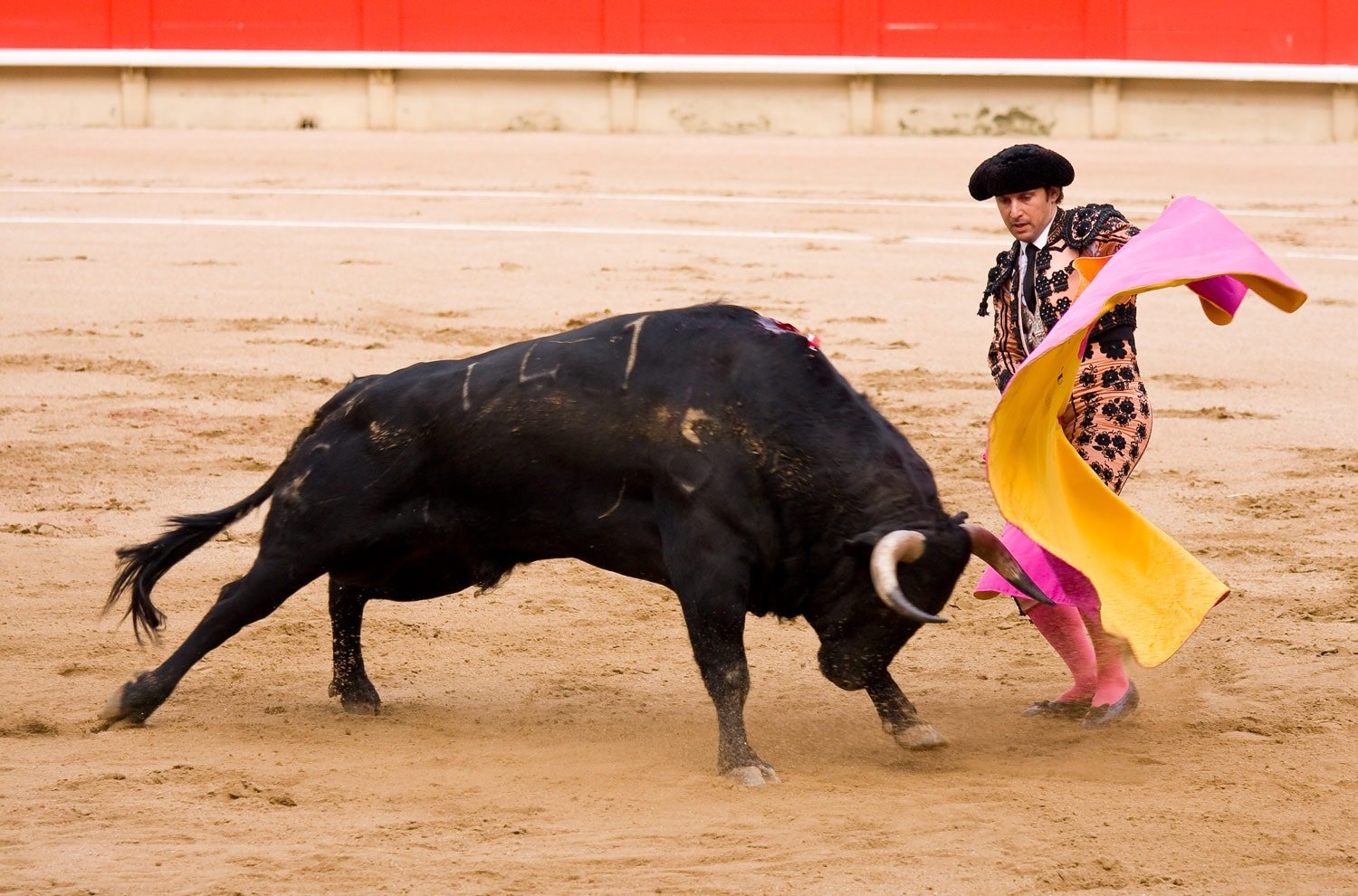

Each of the three cities boasts of exquisite and breath-taking monuments, out of which, Granada’s Alhambra palace, is the most exceptional. The grandest Gothic cathedrals and the bedazzling Alcazar are in Seville, the Andalusian capital, and the seat of its autonomous parliament. It is now a vibrant metropolis and a magnet for visitors all over. The most exquisite mosque constructed by the Moors, Mezquita, is in Cordoba. It enjoys a historic importance in world architecture.
Besides these three cities which are major tourist destinations, the smaller island towns of Andalusia, like the white villages near Ronda, are also worth seeing.
When to go
There is lesser crowd during autumn and the temperature is moderate.
The climate is cool between December and March and the cities are less crowded than in spring, when it is fiesta time.The Holy Week Semana Santa in Seville is celebrated between Palm Sunday and Easter, which sees the maximum crowd in the region. April sees a vibrant Andalusia, whitewashed, clean, and every patio splashed with different hues from the blooms of the bougainvillea and honeysuckle.
How to reach
By Air
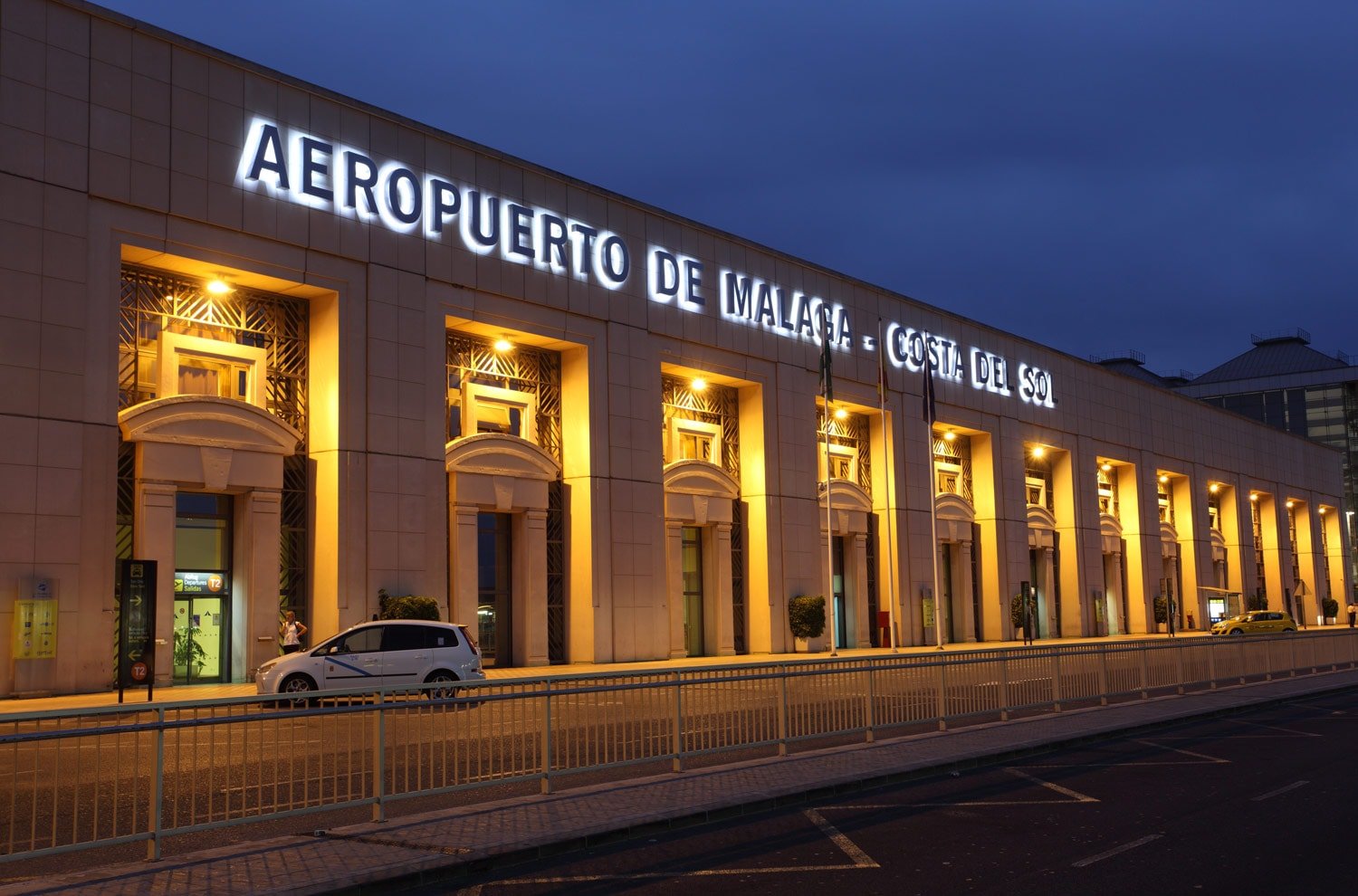
Malaga Airport which lies in the beach city of Costa del Sol, is the axis point of air travel for Andalusia and there are several domestic flights from Madrid and Barcelona as well as other major European hubs.
The much smaller Aeropuerto de Jerez is the nearest airport to Seville, which is also the region’s second largest airport after Malaga, and lies 7km northeast of Jerez on the road to Seville.
There are buses connecting the airport and Jerez and Cadiz.
Granada is another option if you want to begin your trip in Andalusia.
By Train
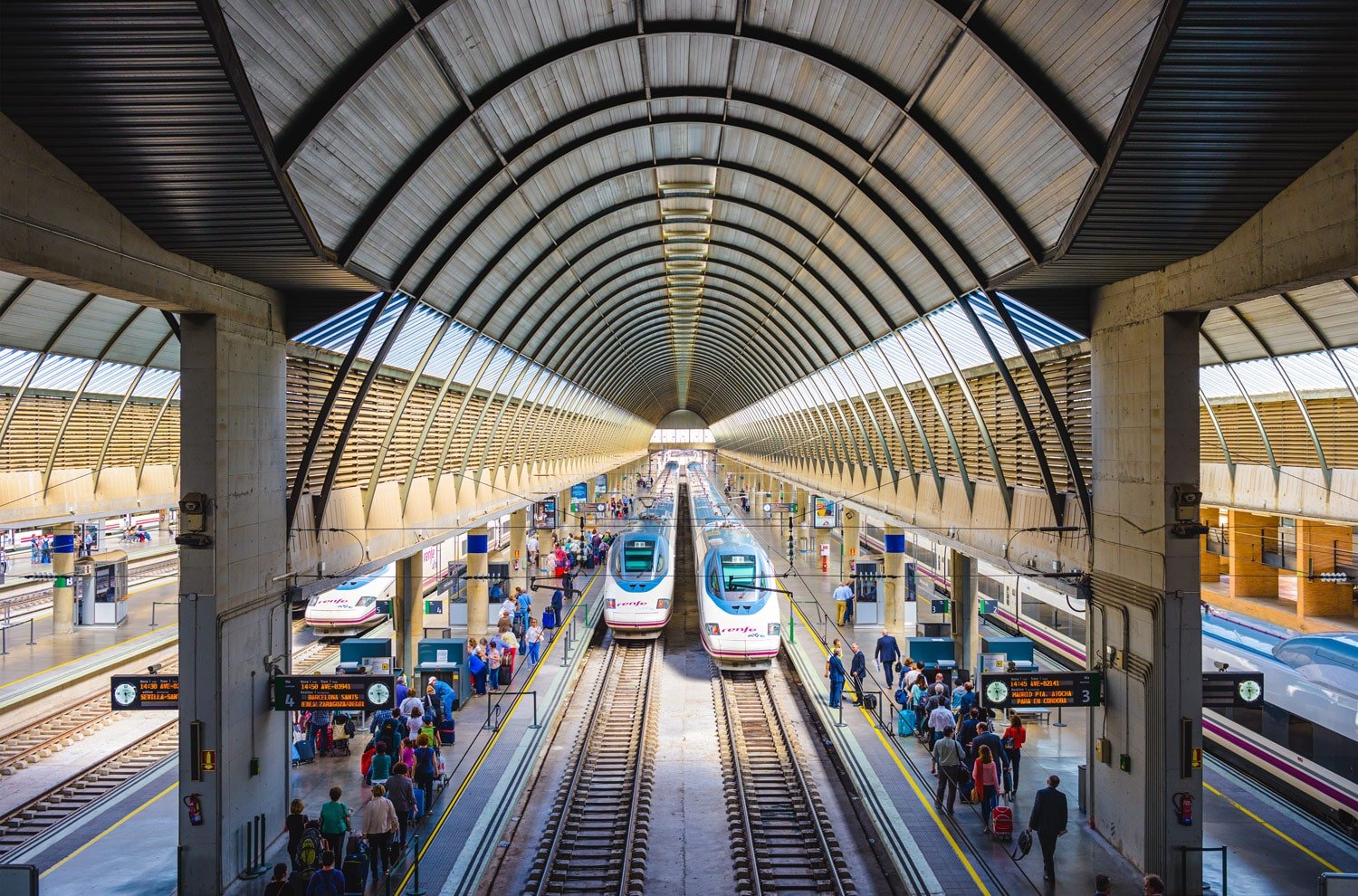
Getting Around
By Bus
Bus is the best way to move around Andalusia. Most small villages and towns are served by buses. They are faster and more frequent too. Tickets can be booked online. One of the major bus company is ALSA.
Granada

The monument looks down at the winding lanes, teterias (tea houses), stately carmenes (huge houses with walled gardens) and the back streets resplendent with street art.

The snow-capped mountains behind the Alhambra provide a sensational backdrop to this Moorish monument. The highest peak of Spain,the Mulhacen, is in this Sierra Nevada mountain range. It also has the country’s largest ski resort.
Massive canyons with white painted villages and traditional flat roofed Berber houses, form Las Alpujarras, the southern side of the range and is famous for its artisans and centuries old craftsmanship.
Another not to be missed highlight of this region are the flamenco shows that are staged in traditional cave dwellings, especially those staged in the Sacromonteneighborhood.
Granada celebrated its 1000th anniversary as a kingdom in 2013.
Top Sights
Alhambra
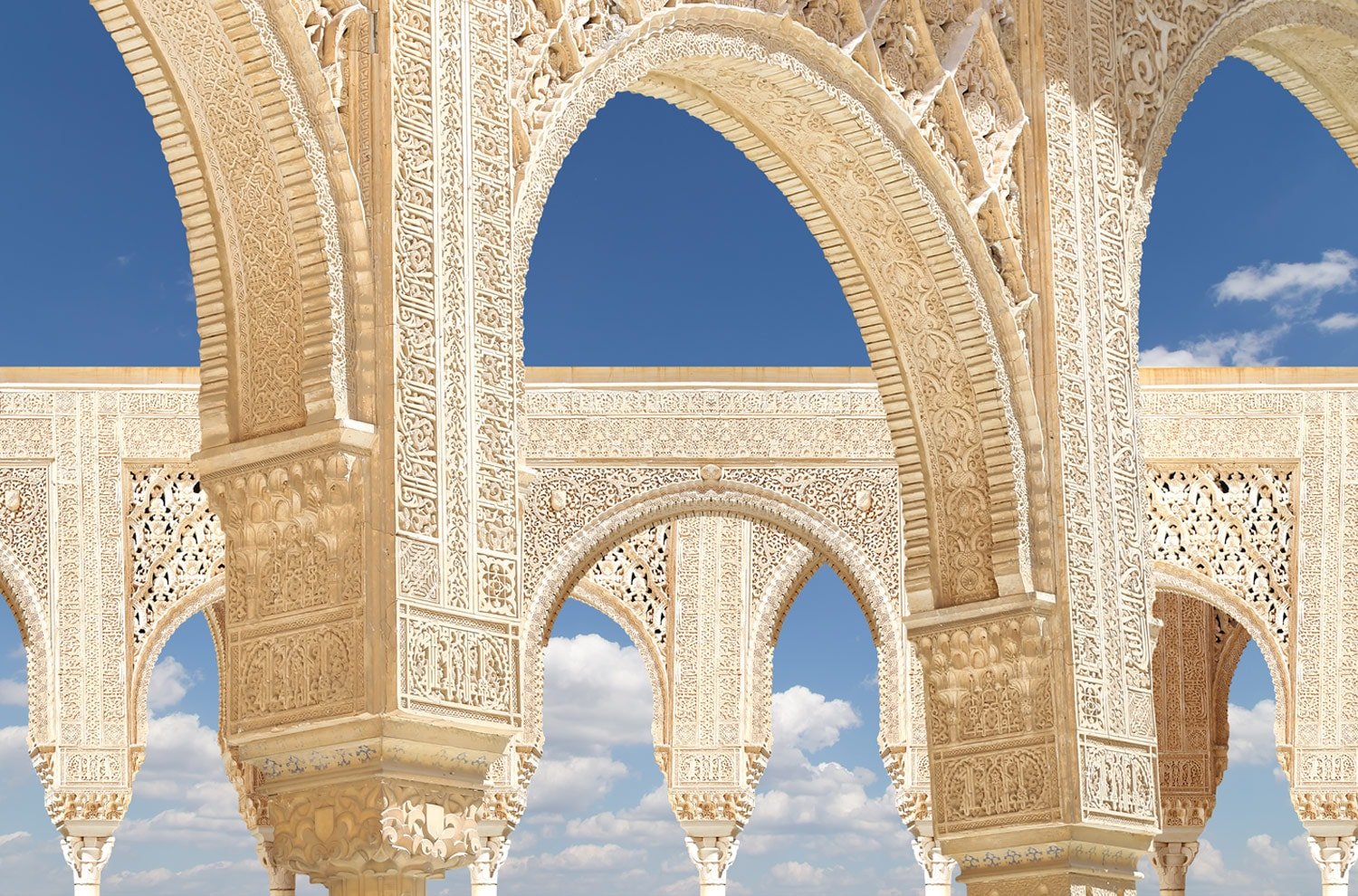
One of Europe’s most romantic architectural masterpiece, the Alhambra with its gushing fountains and rustling leaves conjure an atmosphere where the ancient spirits are believed to linger. It is as if the region was a beautiful canvas on which was painted the Alhambrawith a Moorish signature, an ode to the unique cultural mix of Moors and the Spaniards.
Declared a World Heritage Site, Alhambra is partly a fort, partly a palace and definitely a comprehensive lesson in medieval architecture with its intrinsic details. Ever an enchantment to expectant visitors, the glory of this historic monument will live on forever.
The name Alhambra has its origin in the Arabic word, al-quala’a al-hamra, which means the Red Castle. The first palace built on this site, was by Samuel Ha-Nagid, who was the Jewish grand vizier of an 11th century Zirid sultan of Granada. The entire area was turned into a fortress complex by the Nasrid emirs during the 13th and 14th centuries. A church, the Convento de San Francisco (Parador de Granada, now), replaced the Alhambra mosque after the Reconquista (Christian reconquest). An entire wing of the palace was destroyed by Carlos I, the grandson of the Catholic Monarchs, for his huge Renaissance work, the Palacio de Carlos V, who was also known as the Habsburg emperor, Charles V. It was even turned into barracks during Napoleonic occupation and was almost blown up. What we see today is largely due major but respectful reconstruction.
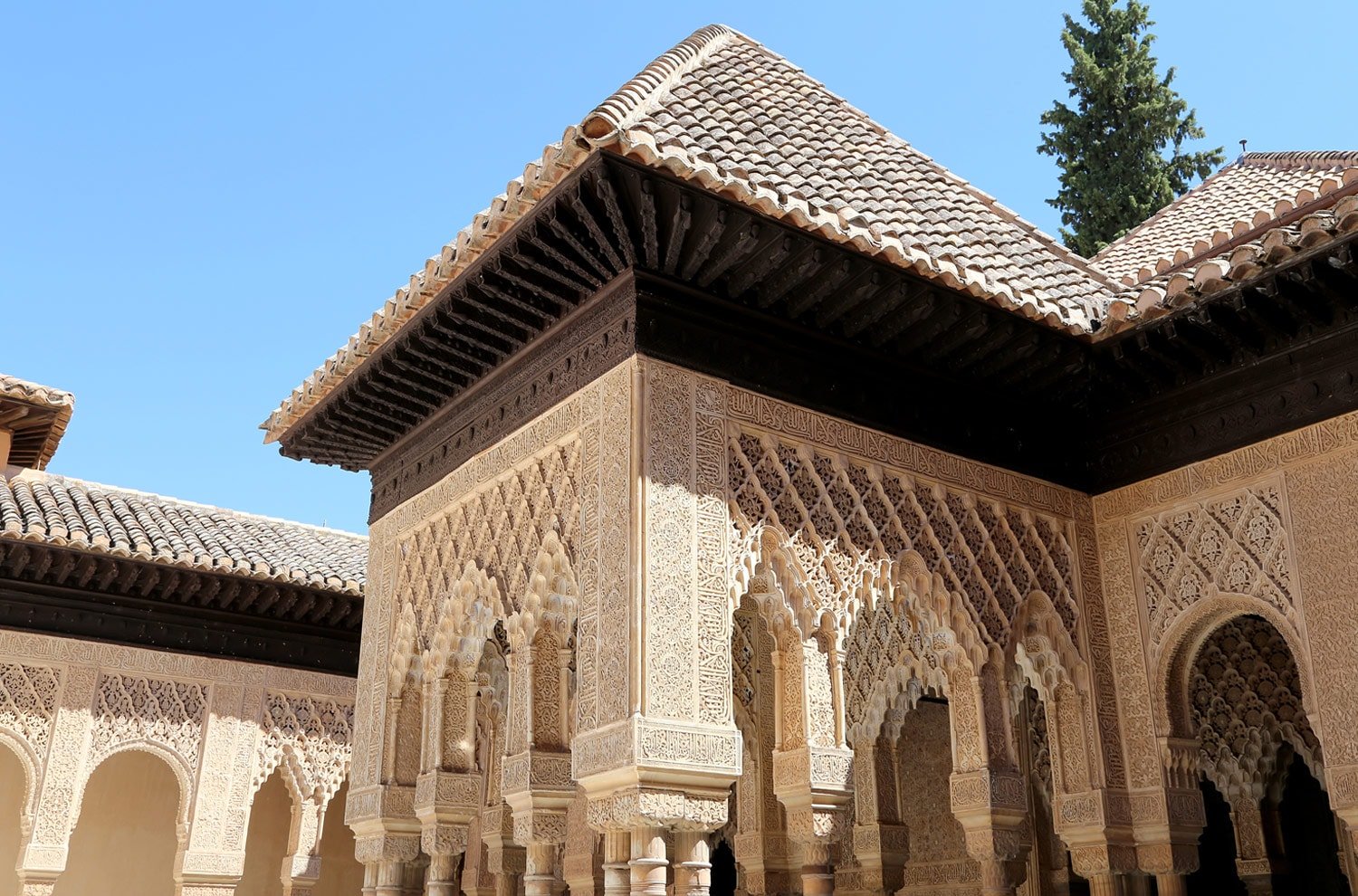
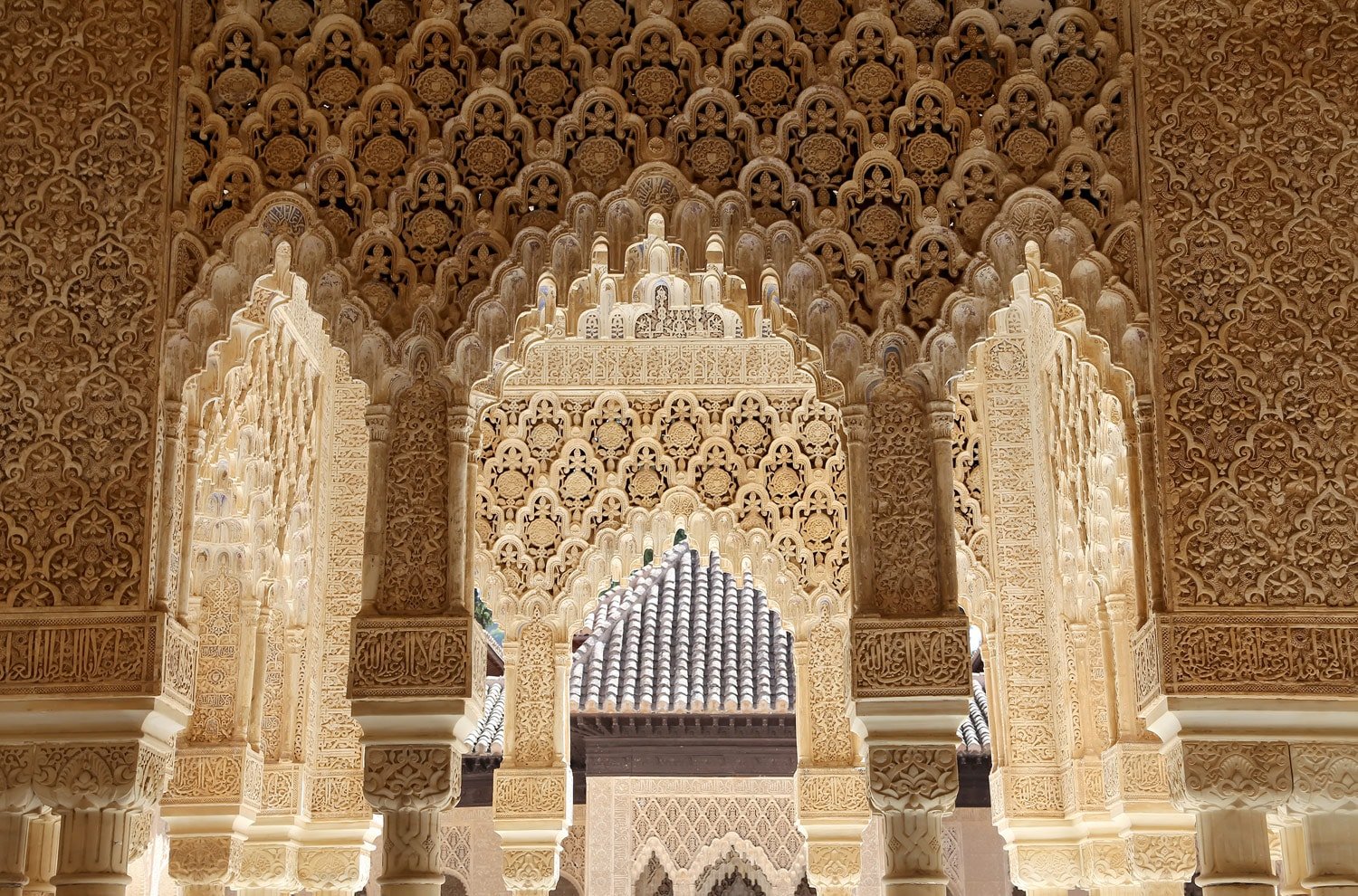
The year 1829 saw Washington Irving arrive here to live, and did his best to revive the interest in this palace, by his 1832 book, Tales of the Alhambra. Granada launched a complete restoration program in 1862, which has been carried on since.
Alcazaba, the original fortress, is across the main entrance. The watchtower Torre de la Vela stands tall. The Albayzin can be seen to the north from here. To the northeast is Sacromonte and to the west is the cathedral. The Moors and the Christians, once used the tower’s bell to announce the opening and closing of the irrigation system on Granada’s great plain.
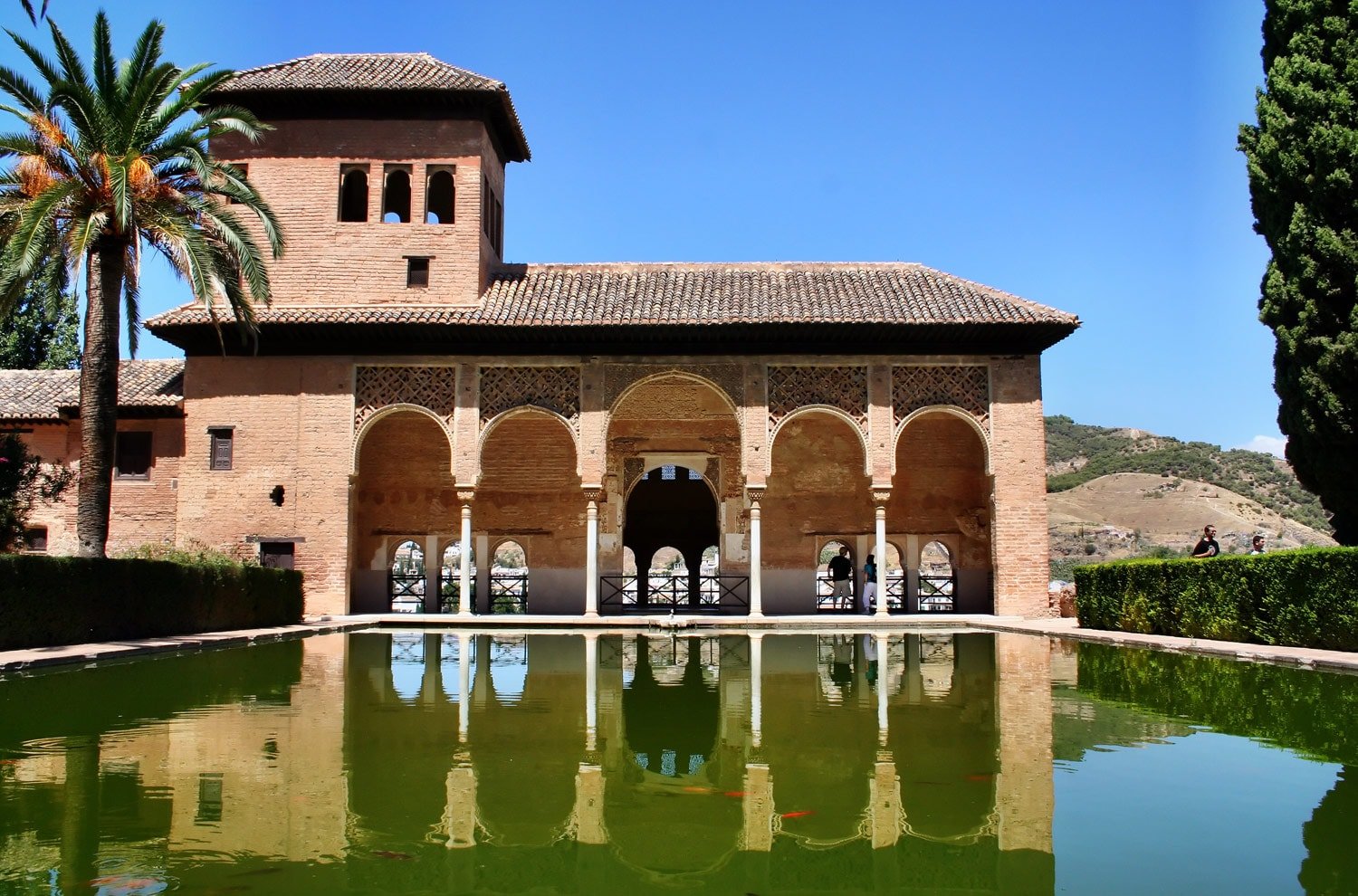
The Mexuar is where business, government and palace administration were headquartered. The Oratorio (Oratory) and the Cuarto Dorado (Golden Room) are part of the chambers, from where the Albayzin and Sacromonte can be seen.
The Serrallo is a series of state rooms, where the sultans held court and entertained their ambassadors. In its heart is the Patio de losArrayanes (Court of the Myrtles) that has a long goldfish pool. The Salon de Embajadores (Hall of the Ambassadors) is at its northern end. There is a cedar door here where the terms of surrender was signed by King Boabdil and where Queen Isabella received Christopher Columbus.
The Harem was the exclusive place of the sultan, his wives and the rest of his family and their trusted servants mostly comprising of eunuchs.
The Palacio Nazaries can be reached through the Sala de losMocarabes (Hall of the Ornamental Stalactites). The ceiling here is elaborately done with stalactite style stonework in the arches above. The heart of the harem is the Patio de los Leones. The 12 lions representing the 12 months or the zodiac signs can be found in the fountain in the centre. The four streams flow to the surrounding state apartments, symbolising the four corners of the cosmos. In 2012, the lions and the fountain were restored and the court paved with white marble as it was originally done.

On the east side of the patio is the Sala de los Reyes (Hall of the Kings). Its ceiling frescoes are said to be the work of a Christian Spaniard who visited here. It was later painted during the last days of the tenure of the Moors.
The Hall of the two sisters (Sala de las Dos Hermanas) is to the north. Its stuccoed ceiling with its intricate honeycomb pattern and the patterned pomegranates on the walls enhance its visual effect. It was Zoraya’s home.
The sultan’s favourites enjoyed the brightly tiled pools beneath the star-shaped points of light from the ceiling of the BanosReales (Royal Baths), Alhambra’s semi subterranean bath house. Rarely opened to visitors for conservation reasons, the baths offer glimpses from the entrance.
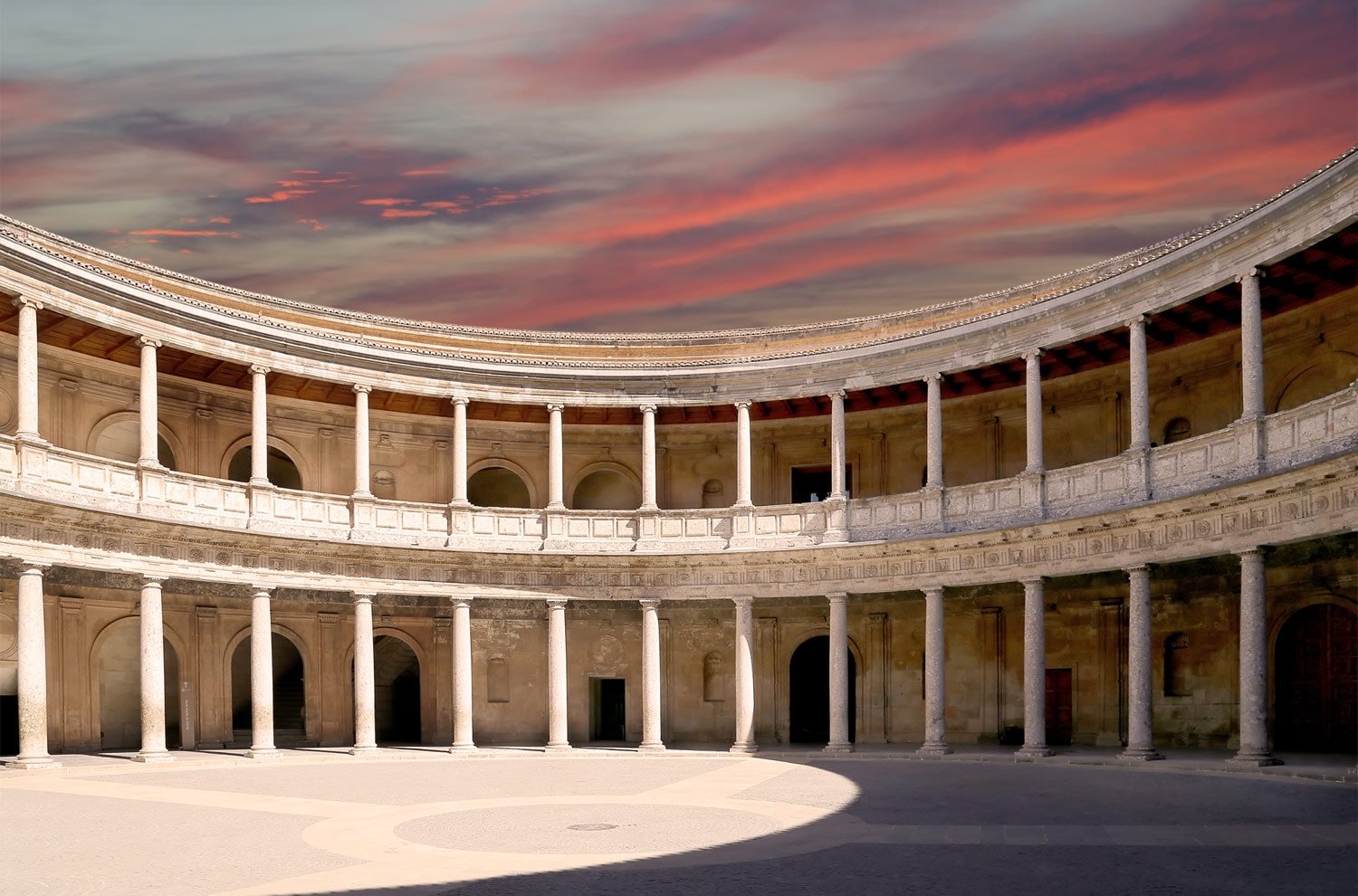
Devoted to Islamic art, Museo de la Alhambra (Museum of the Alhambra) is housed in a separate section of this building. The Fine Arts Museum (Museo de BellasArtes) is upstairs. The palace and the museums can be independently visited. Alhambra is Spain’s most popular tourist attraction, with over 2.3 million years per year.
Alhambra is essentially a pilgrimage for most tourists and hence is mostly crowded. Peak summer sees over 6000 visitors here daily. Hence, a visit when there are lesser crowds is advised, else try to reserve a time slot either very early or quite late in the day.
The areas that are usually restricted to visitors are opened once very month, one site each month, during the ‘Space of the Month’ slot. Do visit the specific area on the month of your visit.
Palacios Nazaríes
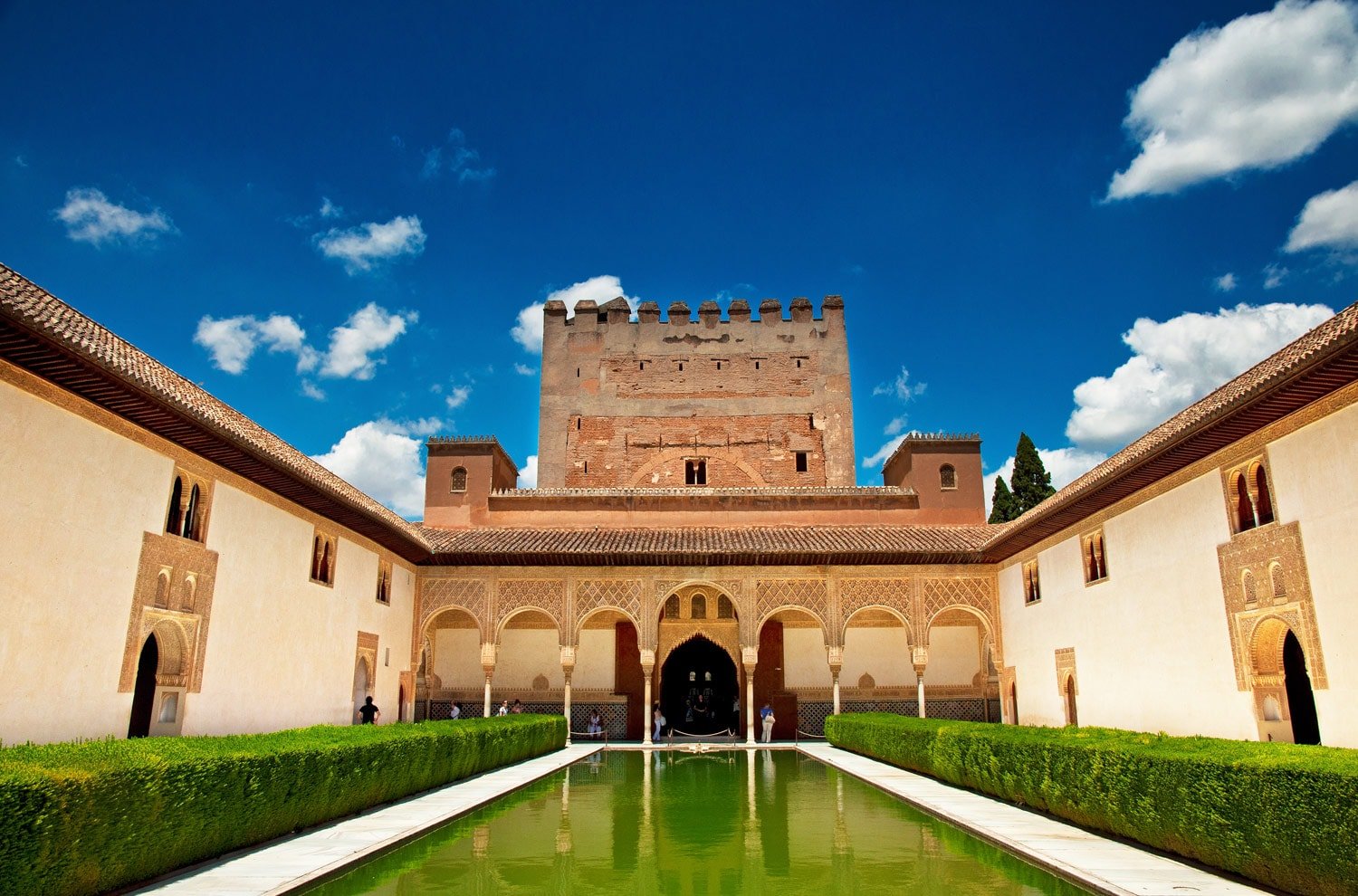
The tickets for the Alhambra are stamped for half an hour. But once you enter the Palacio Nazaries, you can stay inside the for as long as you desire. There are nights visits allowed too. The ticket office opens half hour before the palace’s opening time and closes half hour before its closing time.
Capilla Real (Royal Chapel)
The Catholic Monarchs of Spain, Isabella of Castile and Ferdinand of Aragon, are entombed in this chapel that is beside Granada’s cathedral.

Though they once planned Toledo’s San Juan de los Reyes as their burial site, Isabella changed her mind later when they conquered Granada in 1492. On her death in 1504, her body was laid to rest in the Convent of San Francisco on the Alhambra hill. The construction of the Royal Chapel began in 1506, by the architect Enrique Egas, and reached completion after 15 years. It was a Gothic style masterpiece, now known throughout Spain as Isabelline.
Isabella’s body was kept in a lead coffin in the Royal Chapel crypt, in 1521. Her husband Ferdinand, later joined her there, followed by their daughter Juana la Loca (Joanna the Mad) and son-in-law Felipe el Hermoso (Philip the Handsome).
Ferdinand’s sword, Isabella’s crown and sceptre and her collection of Flemish paintings are held in the sacristy.
The Cathedral

The cathedral has a small back door, off the Gran Via, through which visitors can enter. On display throughout are old hymnals. A 14th century gold and silver monstrance, given to the city by Queen Isabella, is on display in a museum there.
Seville
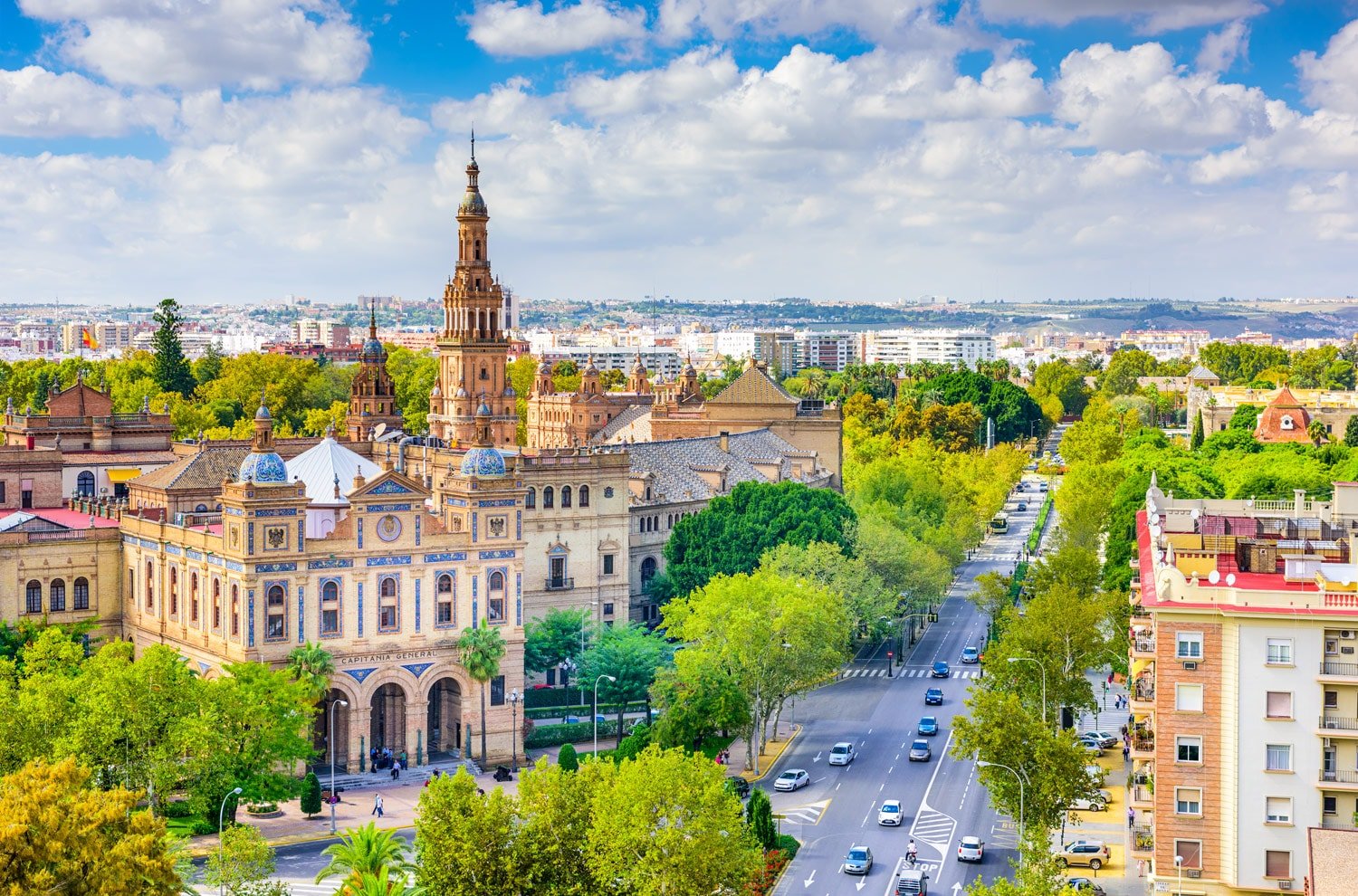
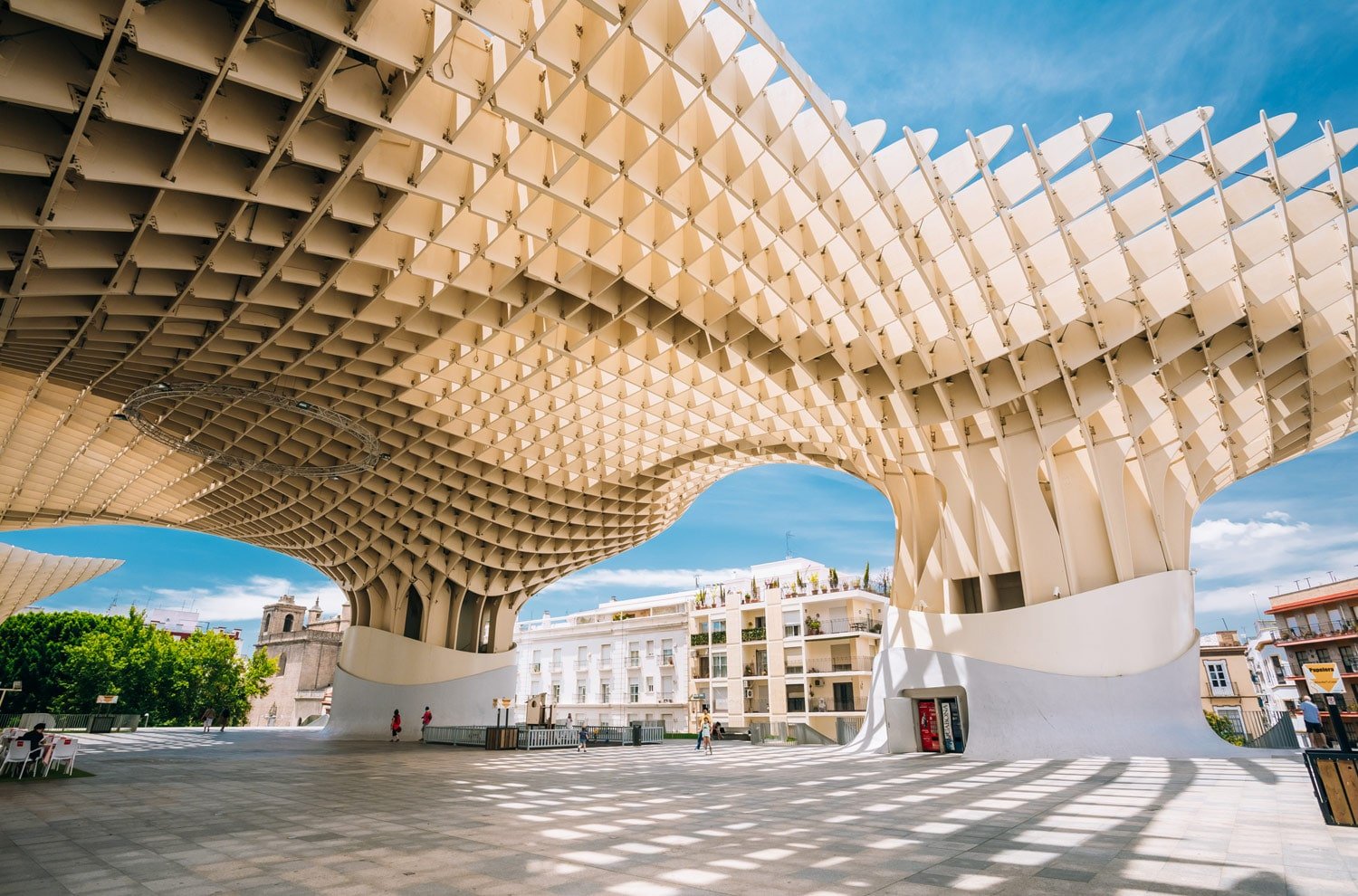
Metropol Parasol is a wooden structure located Plaza de la Encarnacion square, in old quarter of Seville, Spain
Top sights
Alcázar
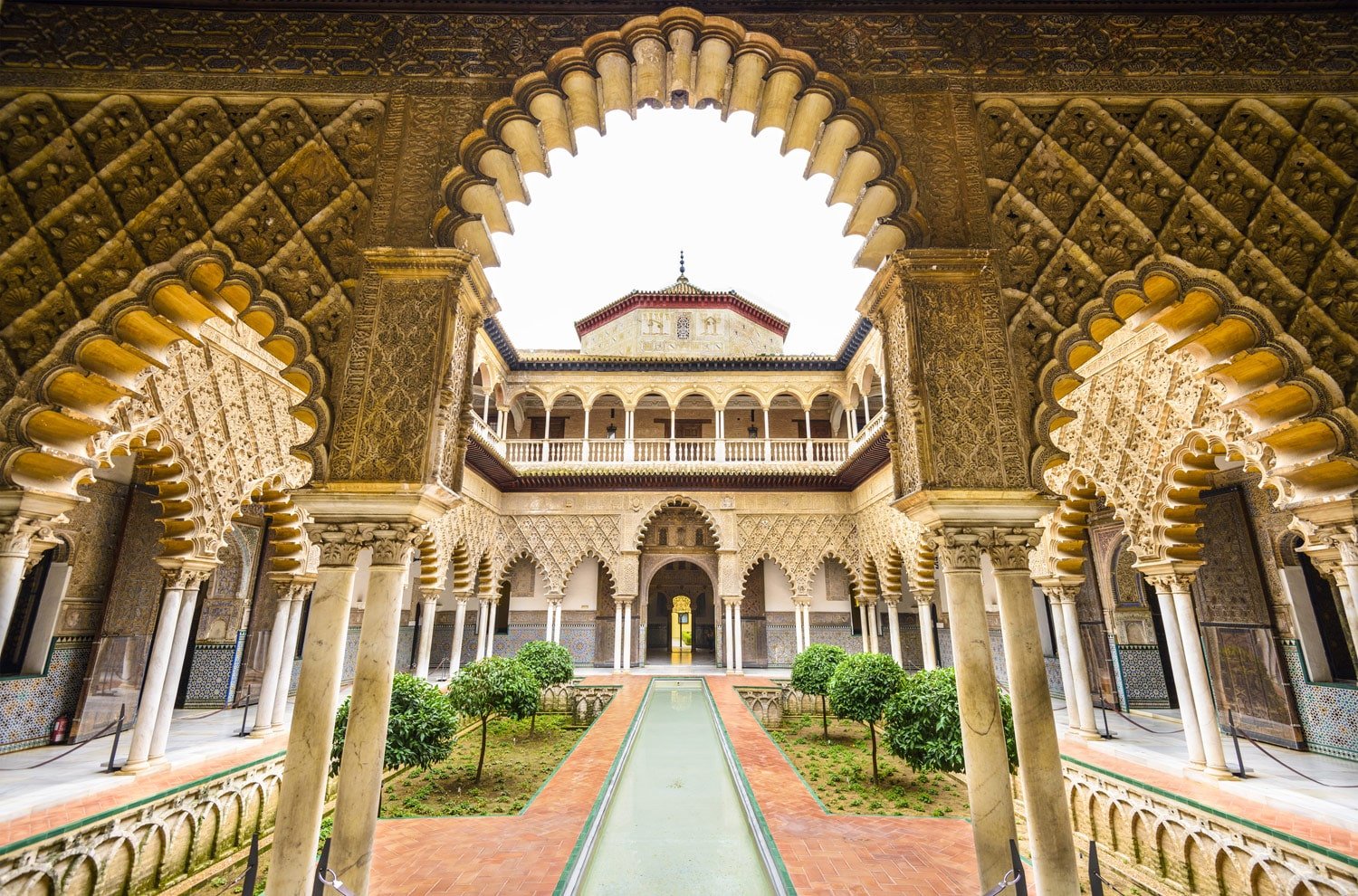
Alcazar is not like the genuine Moorish palace Alhambra of Granada, though there may be some resemblance as it was designed and built by Moorish workers brought in from Granada. More than 100 years after the reconquest of Seville, Alcazar was commissioned and paid for by a Christian king.
The Lion’s Gate (Puerta del Leon), the entrance of Alcazar, its fortified walls, its garden courtyard, the Courtyard of the Lion (Patio del Leon), all together add to the elegance of the palace. The oldest parts of the building, like the 14th century Sala de Justicia (Hall of Justice) and the original segment of the 12th century AlmohadAlcazar, Patio del Yeso (Courtyard of Plaster), are to the left. Once the Patio de la Monteria (Courtyard of the Hunt) is crossed, we enter Pedro’s Mudejar palace at the centre of which is Patio de las Docellas (Court of the Damsels). Off this patio is the grandest hall, Salon de Embajadores (Hall of the Ambassadors), with its cedar cupola in gold, green and red hues.
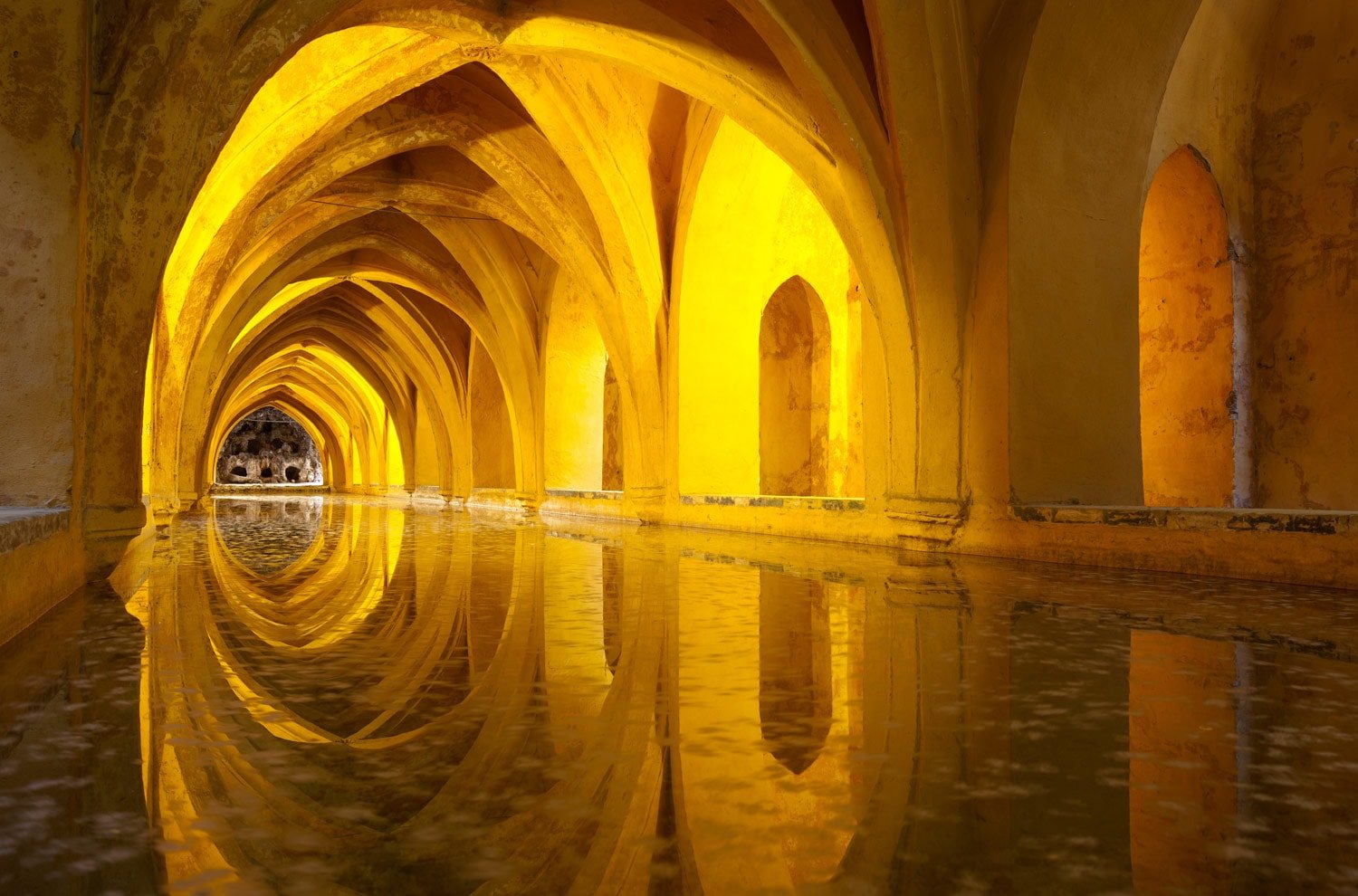
Reflected arches in the Baths of Lady Maria de Padilla (Banos de dona Maria de Padilla)
The Pedro’s influential mistress Maria de Padilla’s three baths are in the other royal rooms. She was supposed to have a tremendous influence upon the Pedro and legend has it that he and his courtiers lined up to drink her bathwater.
Two tiny faces carved as a joke by its Moorish creators on the inside of one of its arches gave the patio the name Patio de las Munecas (Court of Dolls).It was here that Pedro had is half-brother, Don Fadrique, slain here in 1358 and also killed his guest, Abu Said of Granada, for his jewels, among which was a huge ruby, which is nowpart of England’s crown jewels.
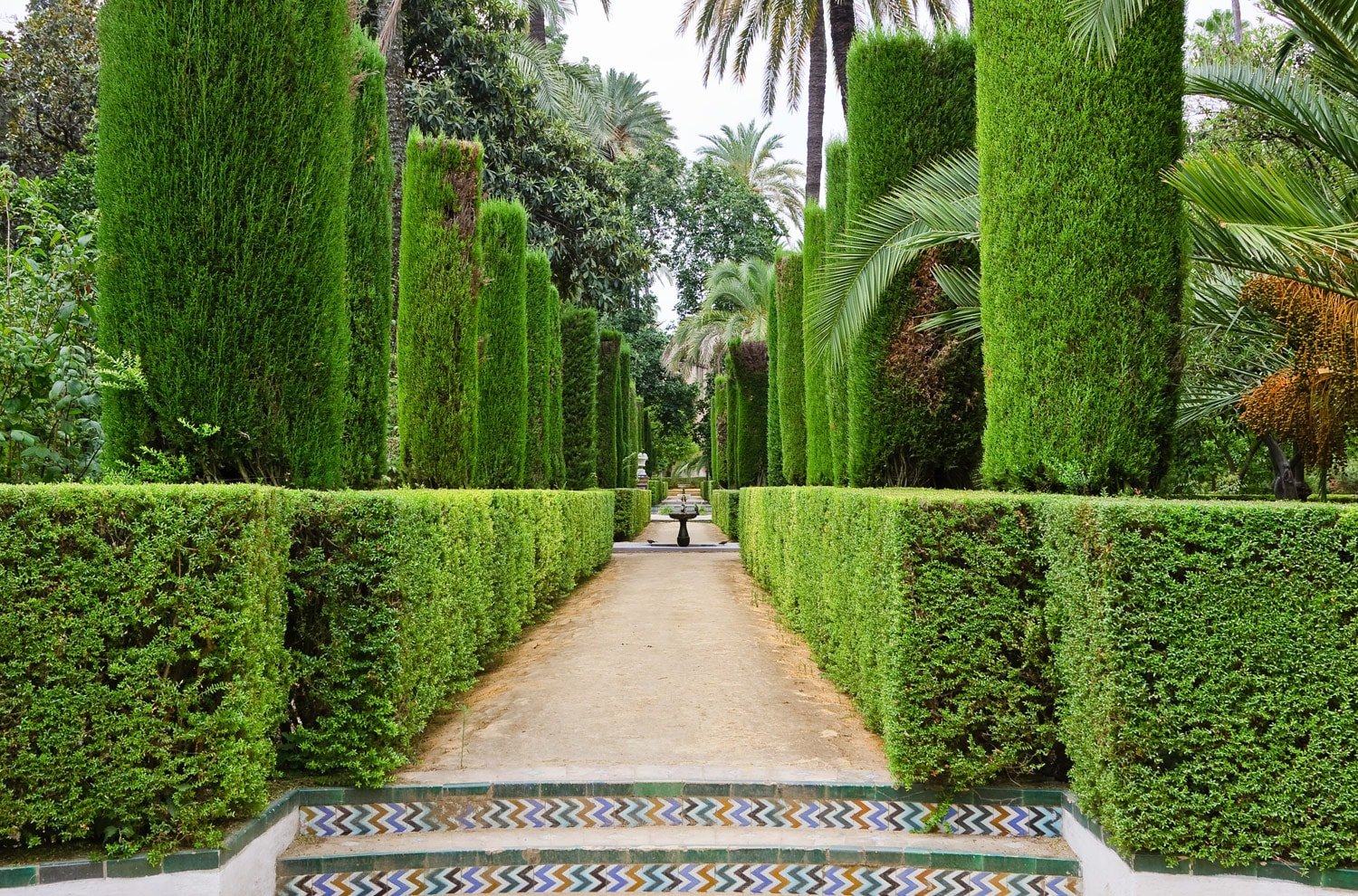
Breathe in the fragrance from the jasmines and the myrtles as you wander among the terraces, baths and the goldfish pond. Walk along the passageway that leads to the Patio de las Banderas (Court of the Flags) to get a fantastic view of the Giralda.
At the heart of the Alcazar is Pedro’s Mudejar palace, a superb example of Mudejar architecture.
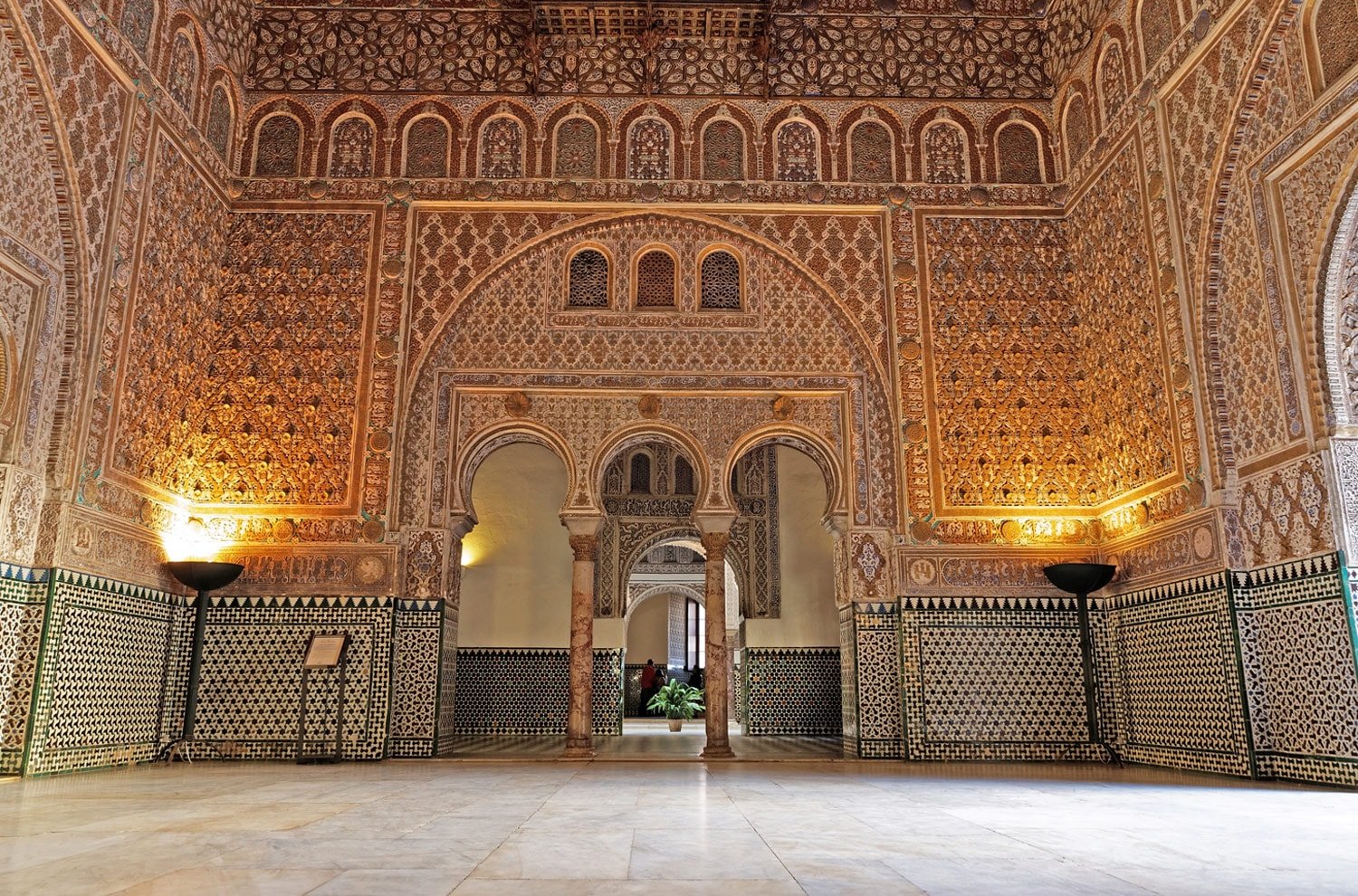
The successive eras that are found in various sections of the Alcazar, are, Moorish(11th-12th century), Gothic (13th century), Mudejar (14th century), and Renaissance (15th-16th century). Inside the palace, to the left is its oldest part, the Patio del Yeso, from the Moorish era.
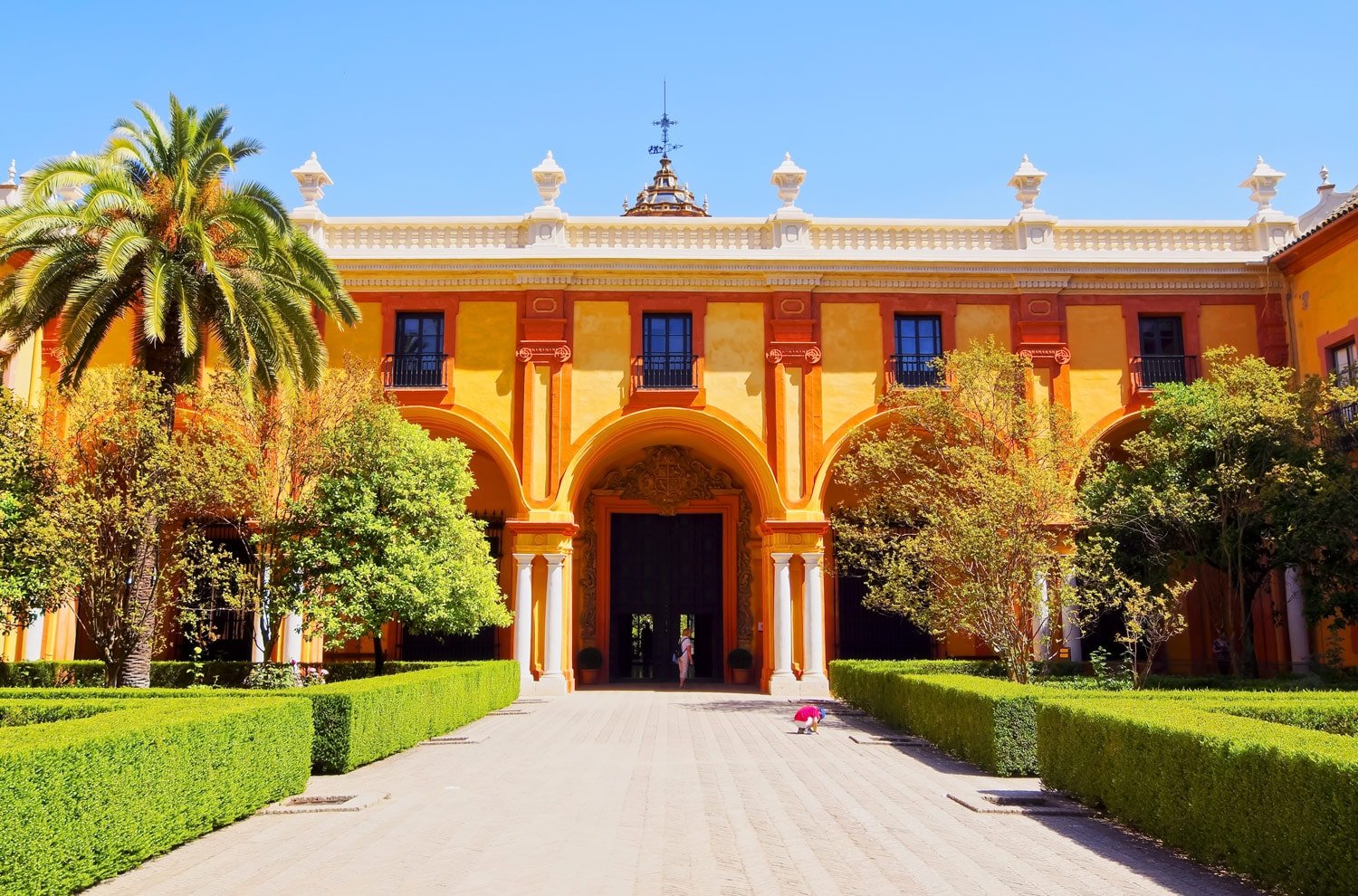
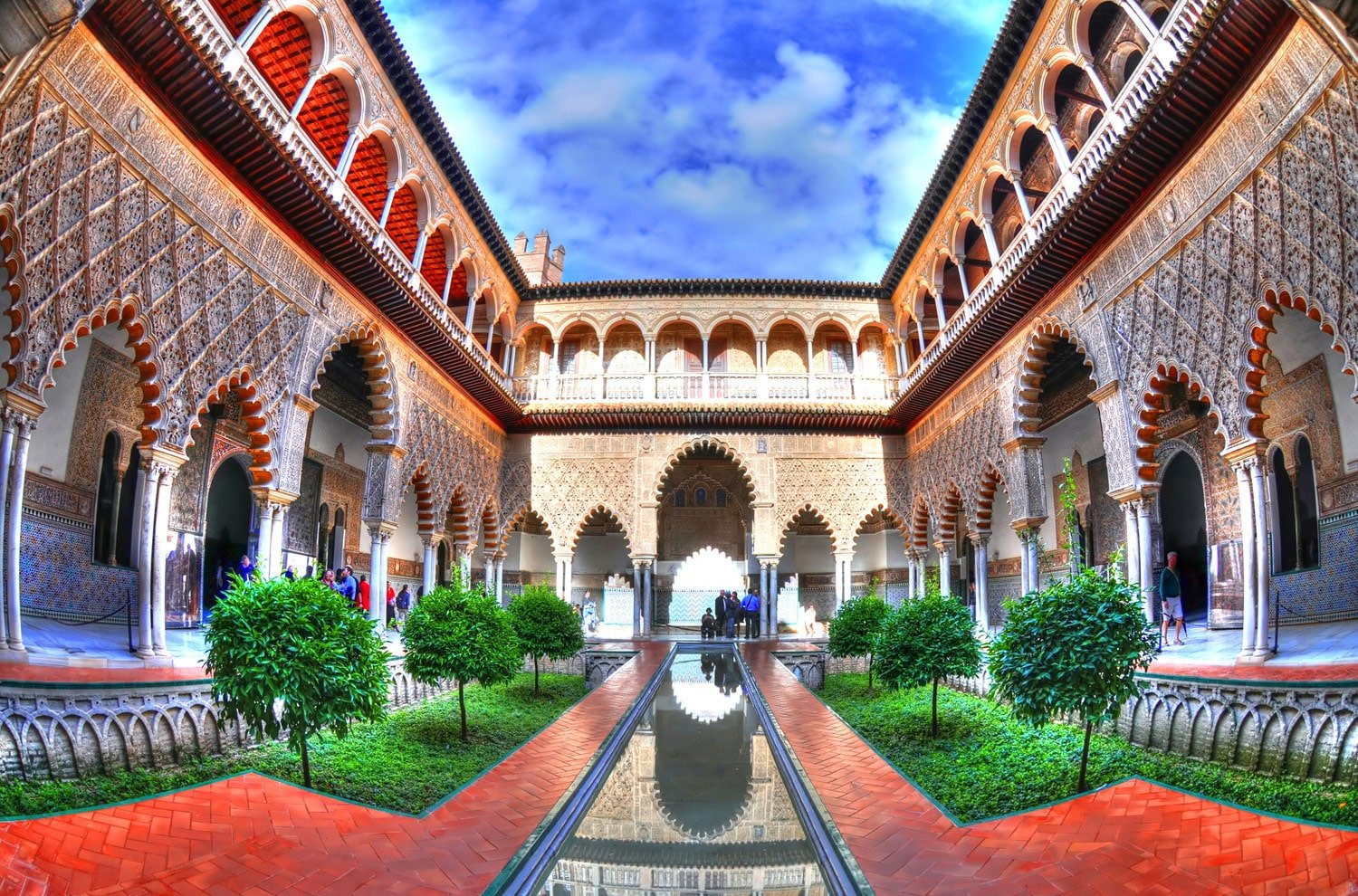
Plan for a minimum of couple of hours at least to immerse yourself in the magnificence of the Alcazar.
Basílica De La Macarena
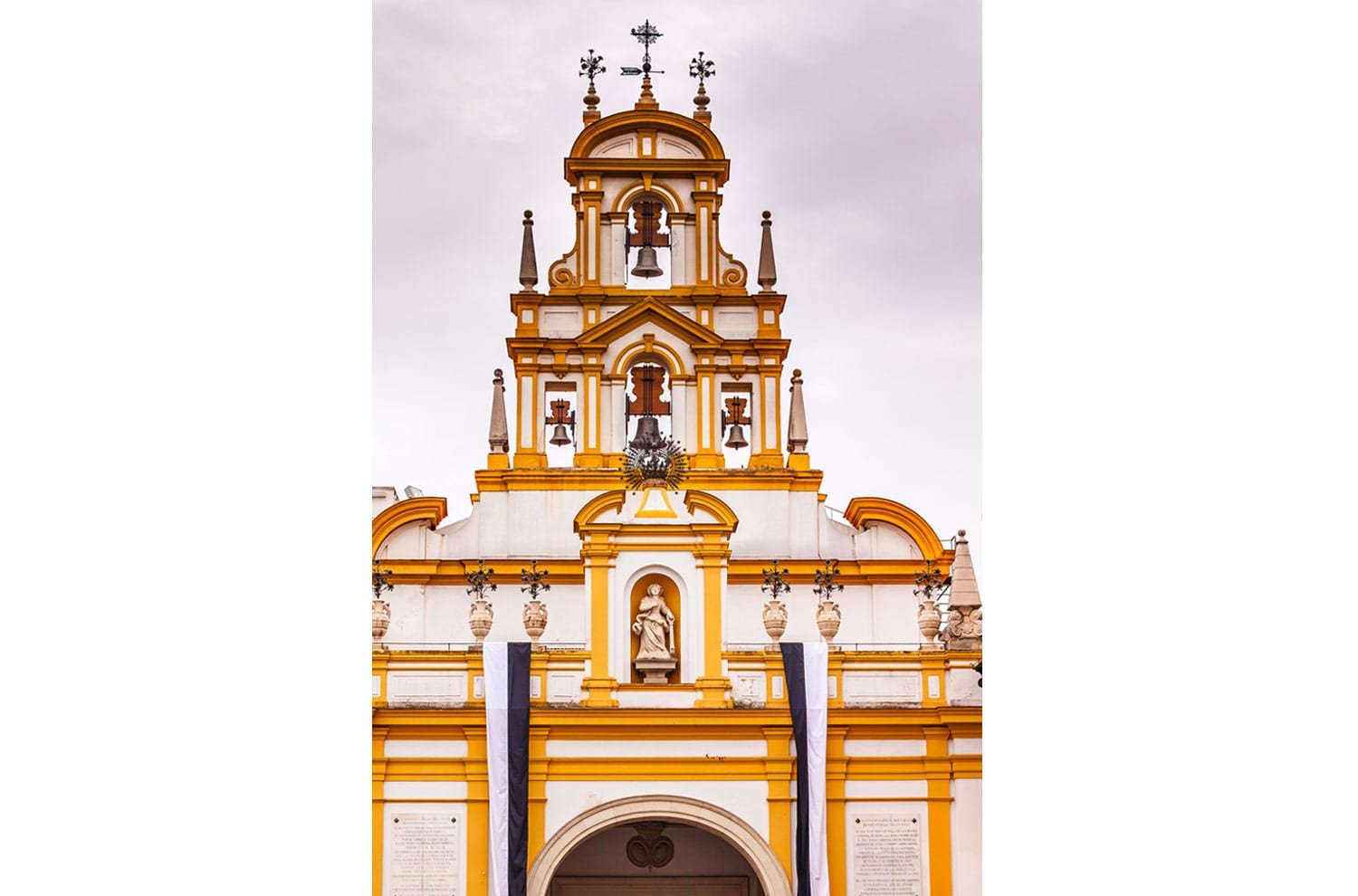
The most revered image of Seville, the Virgin of Hope (La Macarena), is in this church. Famed for the glass tears that trickle down her cheeks, the Macarena, bedecked with candles and carnations, steals the show at the procession on Holy Thursday, Seville’s Holy week pageant.
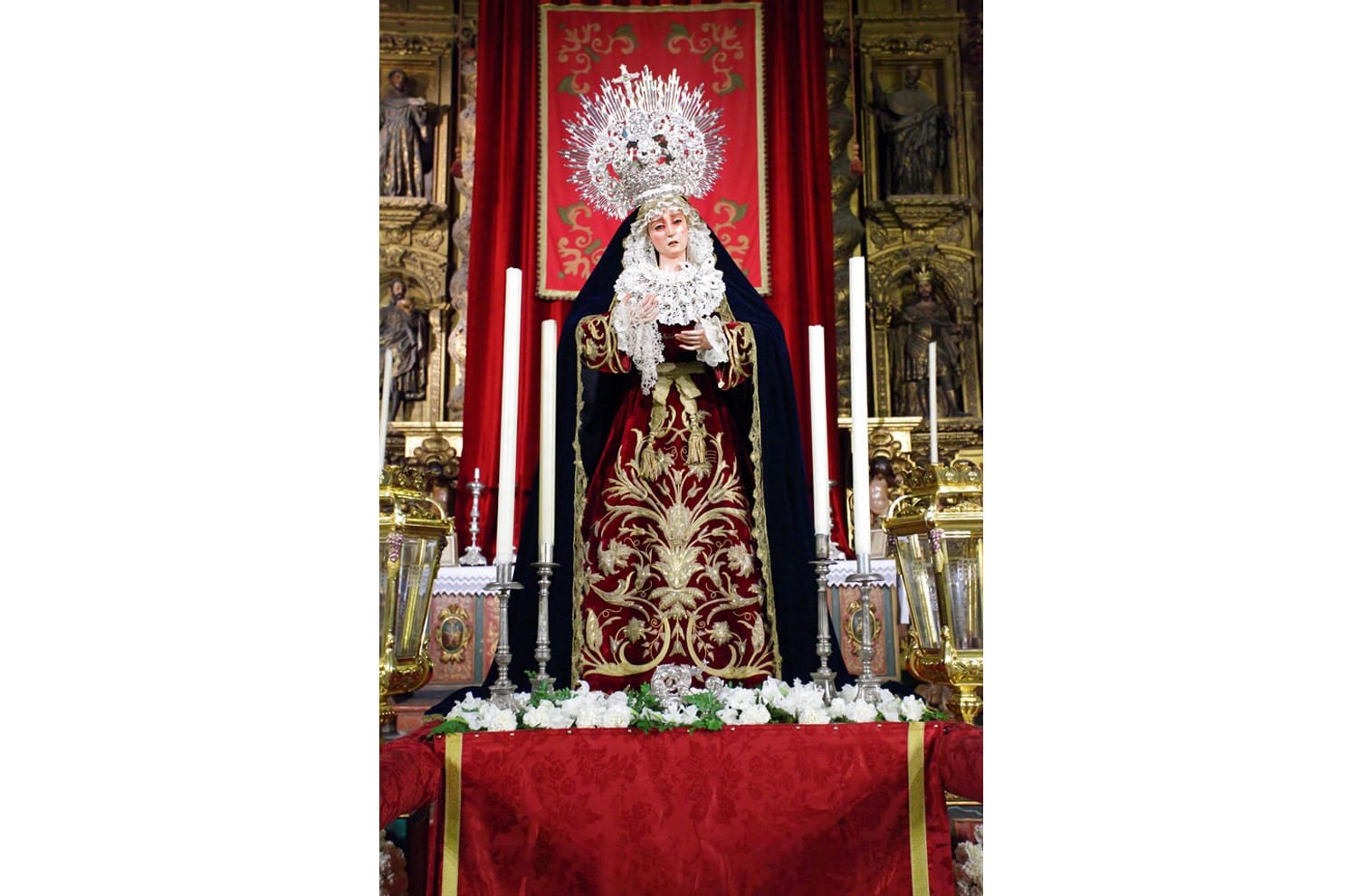
She is the patron of the gypsies and the protector of matadors. Such was her charm that the young Sevillian bullfighter Joselitospent almost half his earnings to bedeck her with emeralds. Macarena was dressed in widow’s weeds for a month when he was killed in the ring in 1920. The history of the Holy week traditions is explained in the adjacent museum through processional and liturgical artefacts amassed by the Brotherhood of La Macarena.
Cathedral
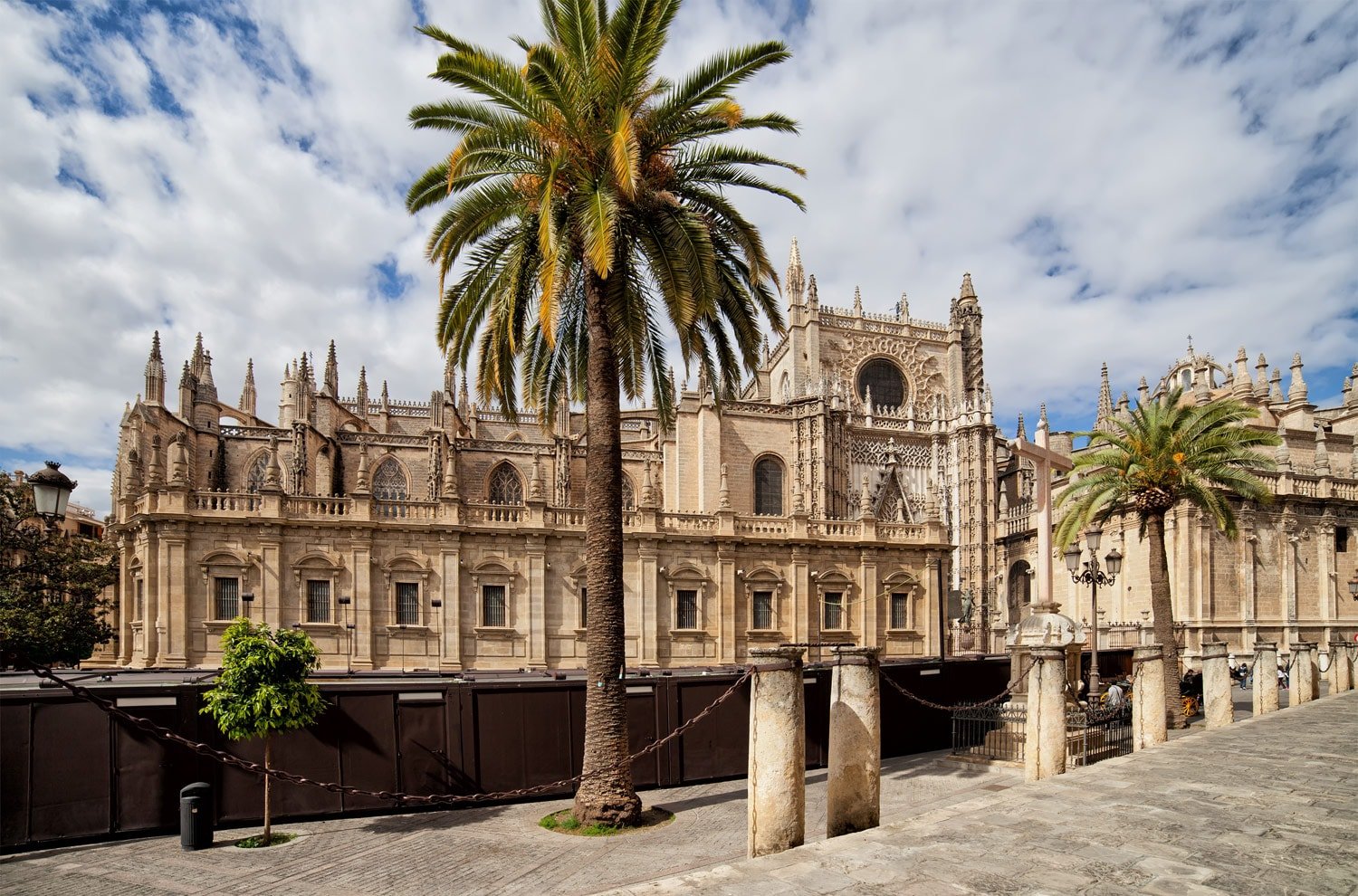
Museo del Baile Flamenco
Conceived by the flamenco dancer Cristina Hoyos, this museum occupies three floors of an 18th century palace. It showcases flamenco with sketches, paintings and photos of many great flamenco dancers along with a collection of dresses and shawls. Night concerts are held here in the courtyard, at 7 p.m., for a fee of 20 Euros.
Workshops and classes are also organised. There is a shop with a unique collection of books and garments.
CASA DE PILATOS
A beautiful blend of Spanish Mudejar and Renaissance architecture, this palace boasts a beautiful patio and azulejo decorations. It is a prototype of an Andalusian mansion. Built by the Dukes of Tarifa, ancestors of the present owner, the Duke of Medinaceli, in the first half of the 16th century, the palace displays frescoes, paintings, and antique furniture. Admission fee includes audio guided tour in English.
JEWISH QUARTER
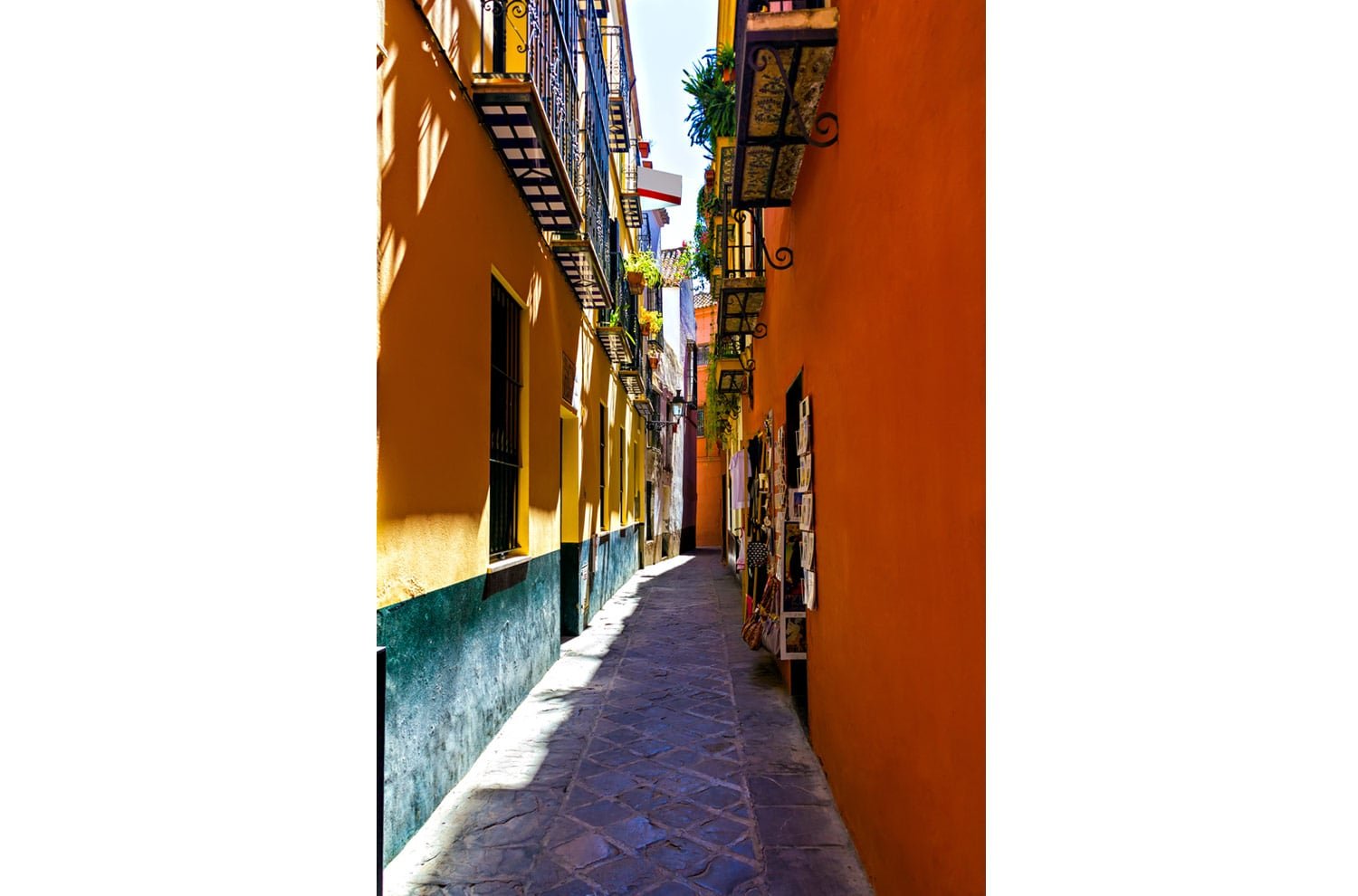
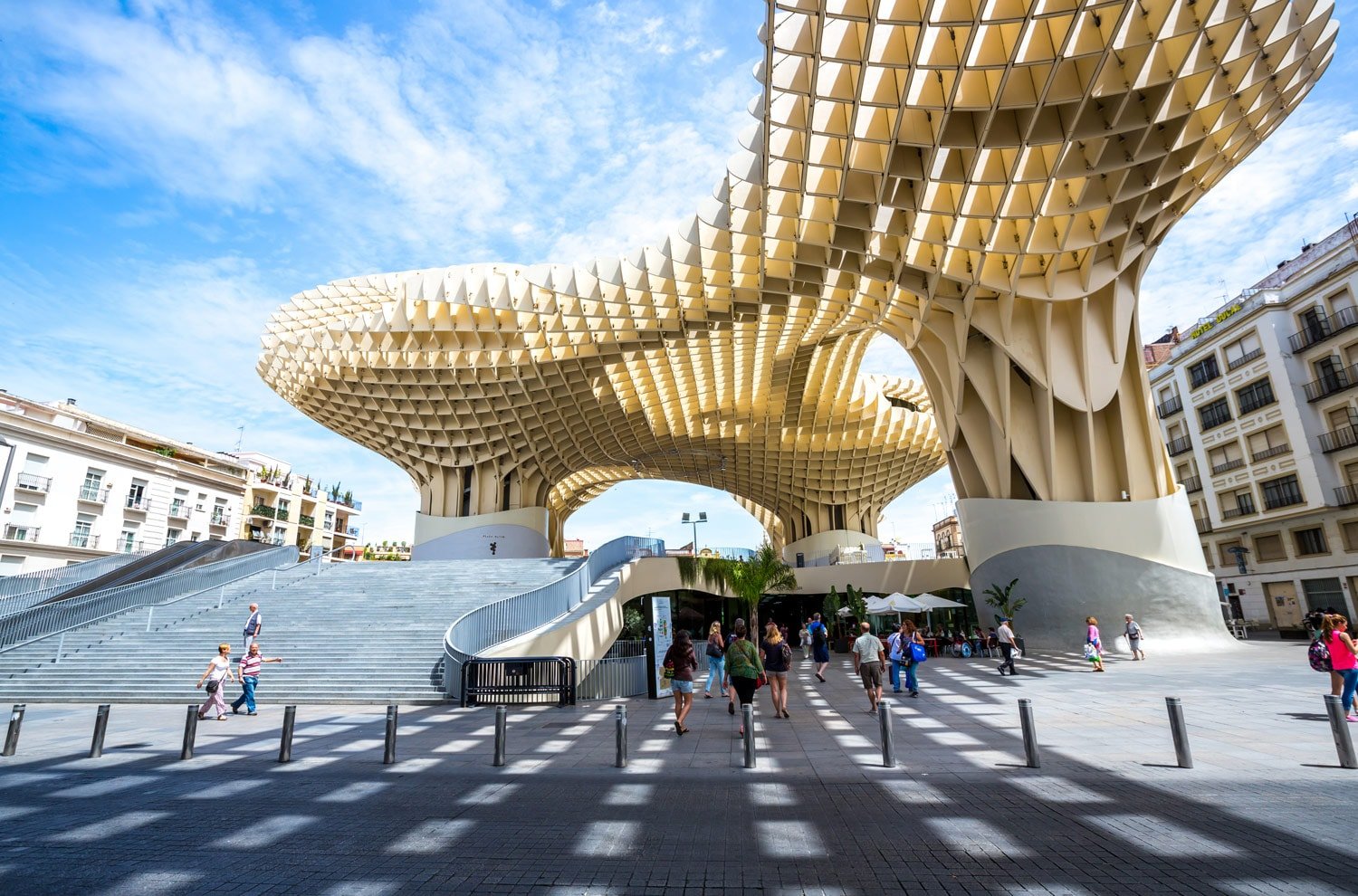
CORDOBA
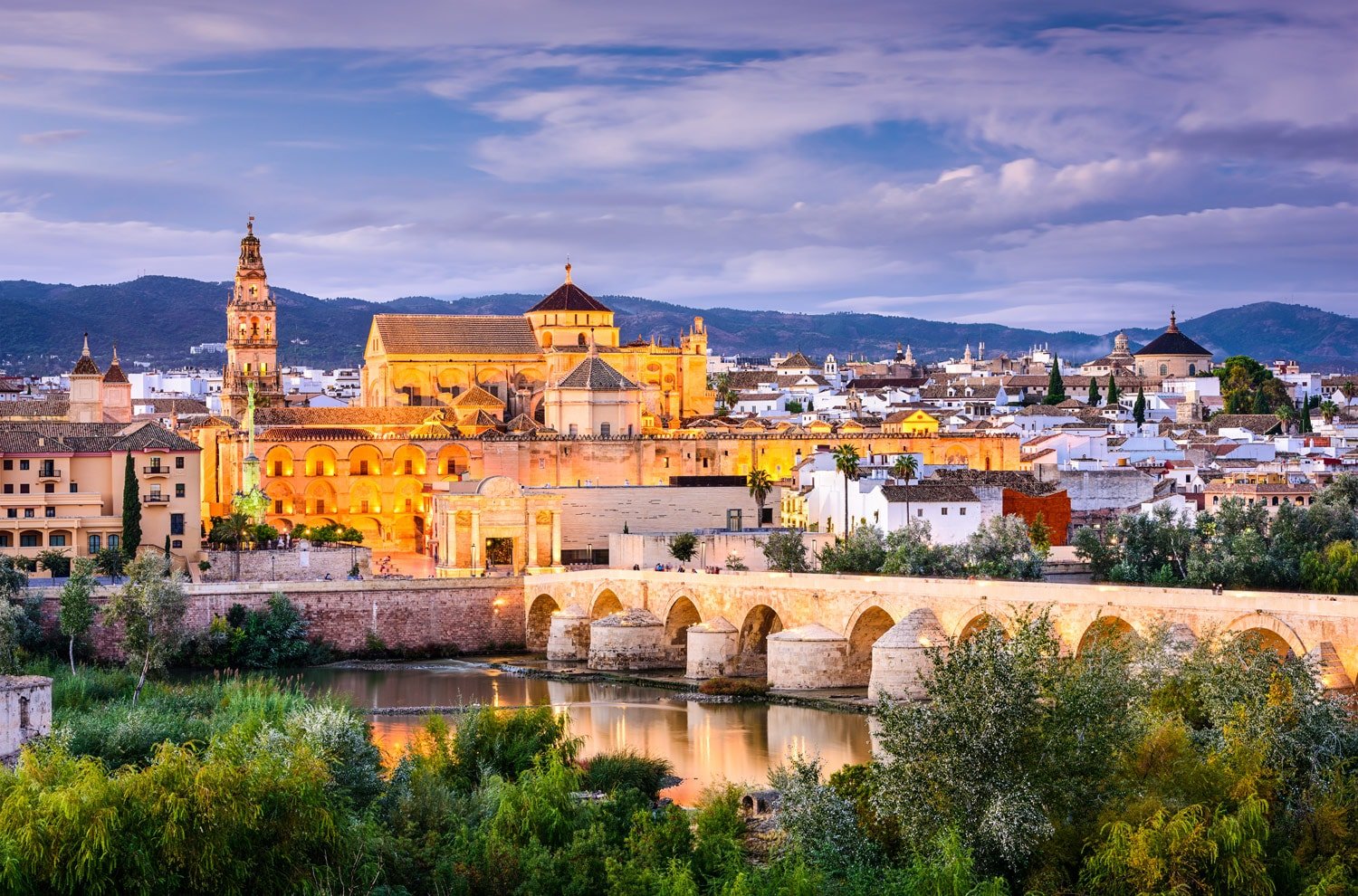

The city’s major monument, the Mezquita, dates from this era. It is the most beautiful mosque constructed by the Moors in Spain, in the centre of the city, and surrounded by old Jewish and Moorish quarters. The mosque was built for daily prayers, but every time you visit, you will find its charm enhancing.
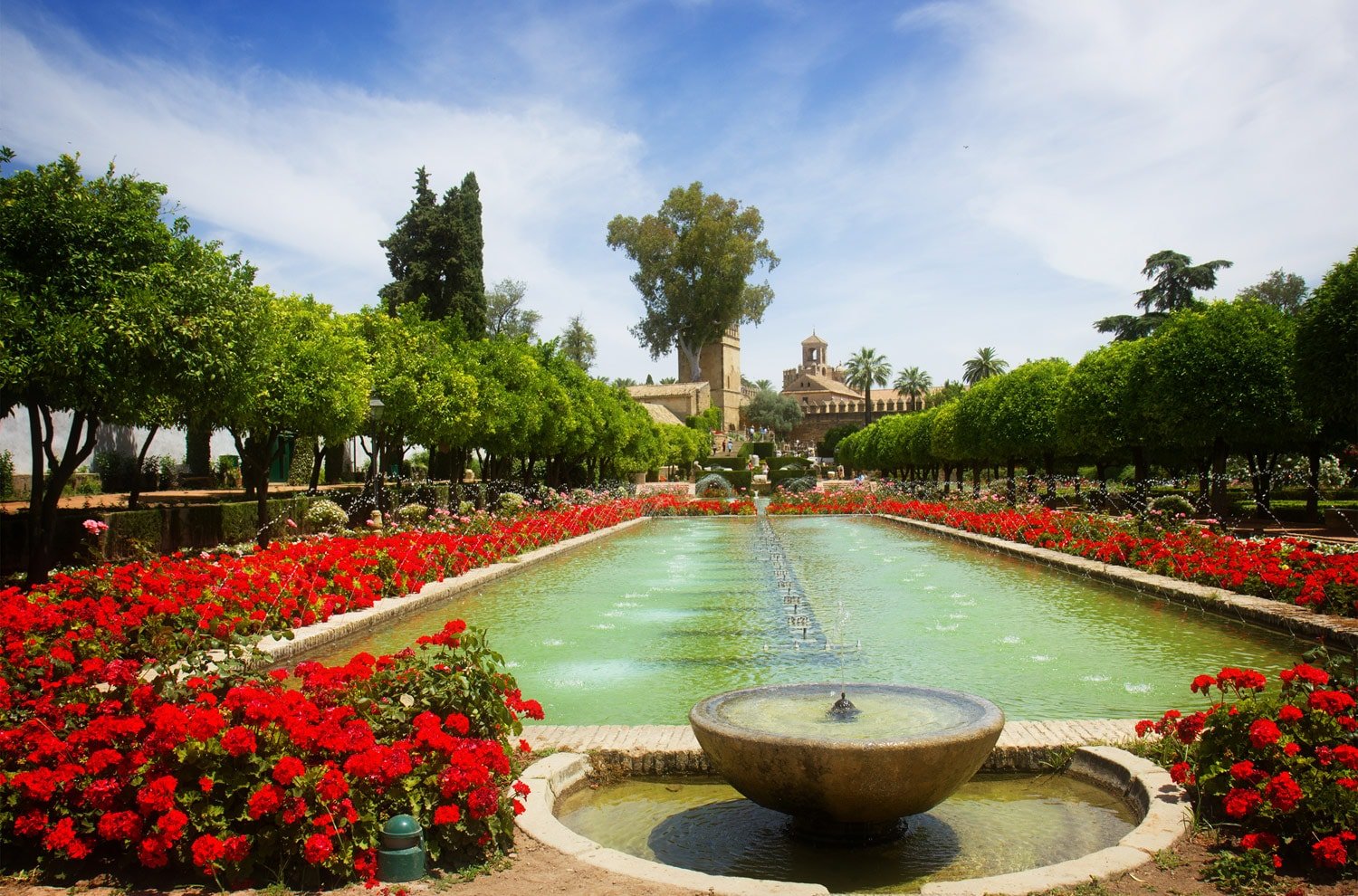
With a population of a little over 300,000, Cordoba offers an intense culture, a legacy shaped by the emirs, caliphs and philosophers, and contributions from physicians, poets and engineers of the caliphate days.
The city has two sides – the touristy and the real part of the town. The former is a maze of streets filled with trinket shops, hotels and restaurants. The side lanes of the Jewish quarter are in between.
Mezquita (Mosque)
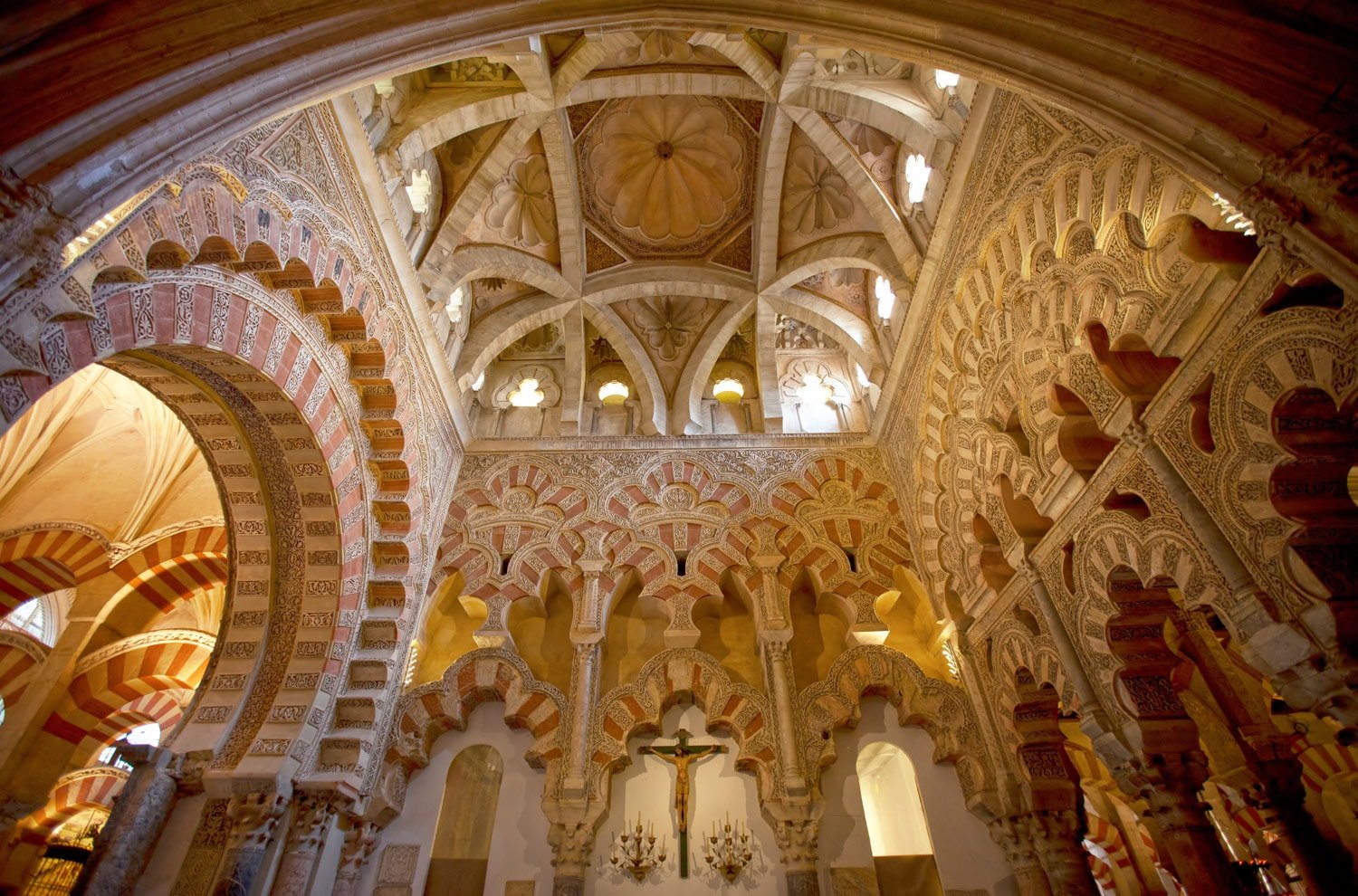
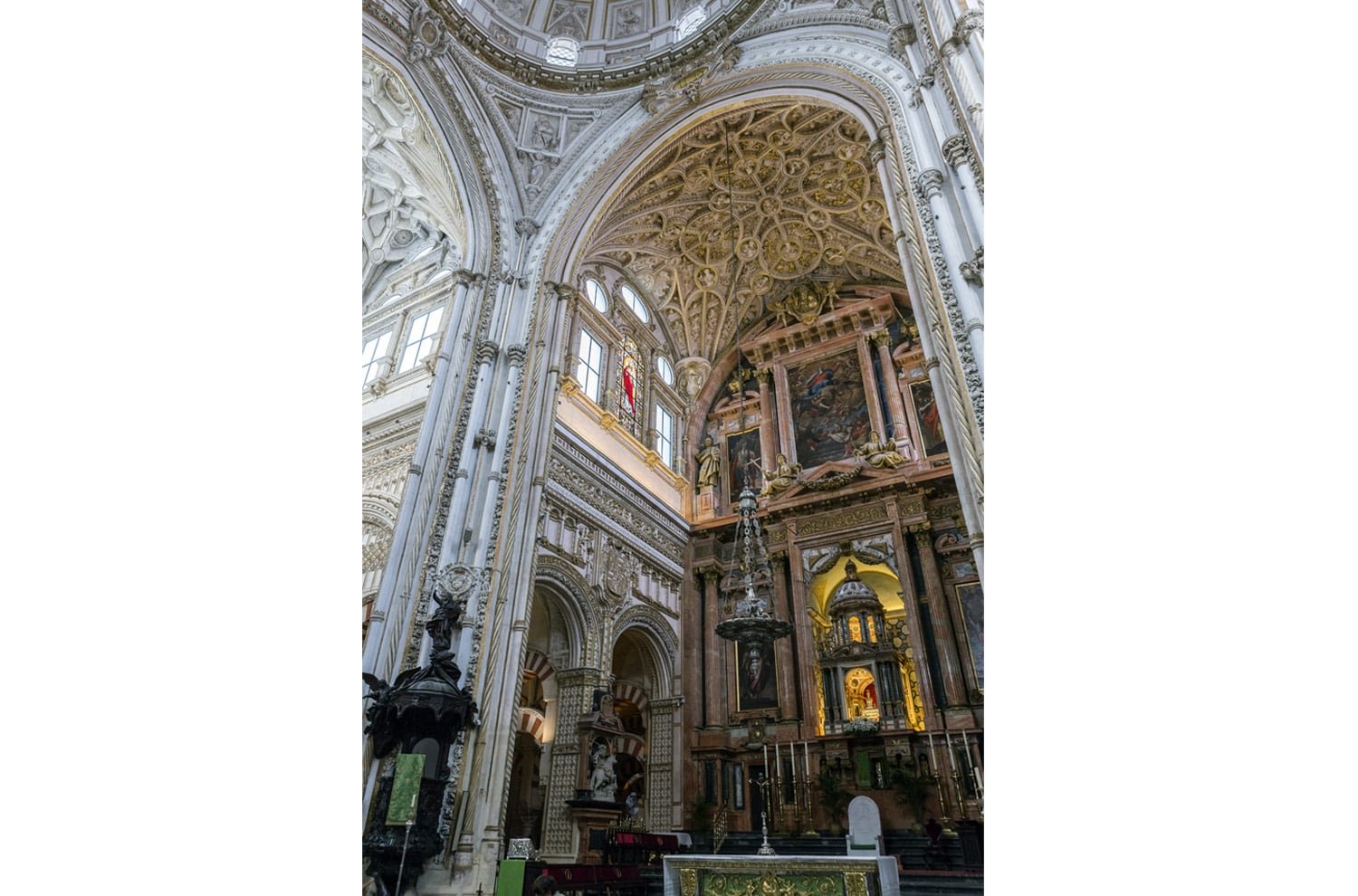
Mezquita’s jewel is the beautiful mihrab (prayer niche), in the south-facing wall, the qiblah, built by Al Hakam II (961-76). Due to an error in calculation, this mihrab faces south as against the Muslim law decreeing that all mihrabs face toward Mecca. After agonising over various means to correct this error, Al Hakam II was persuaded to let it be.

The size of the mosque was quintupled by three later extensions. A 16th century cathedral right in the middle is the reason for the usual description ‘Mezquita Cathedral’.
Madinat Al-Zahra (Medina Azahara)
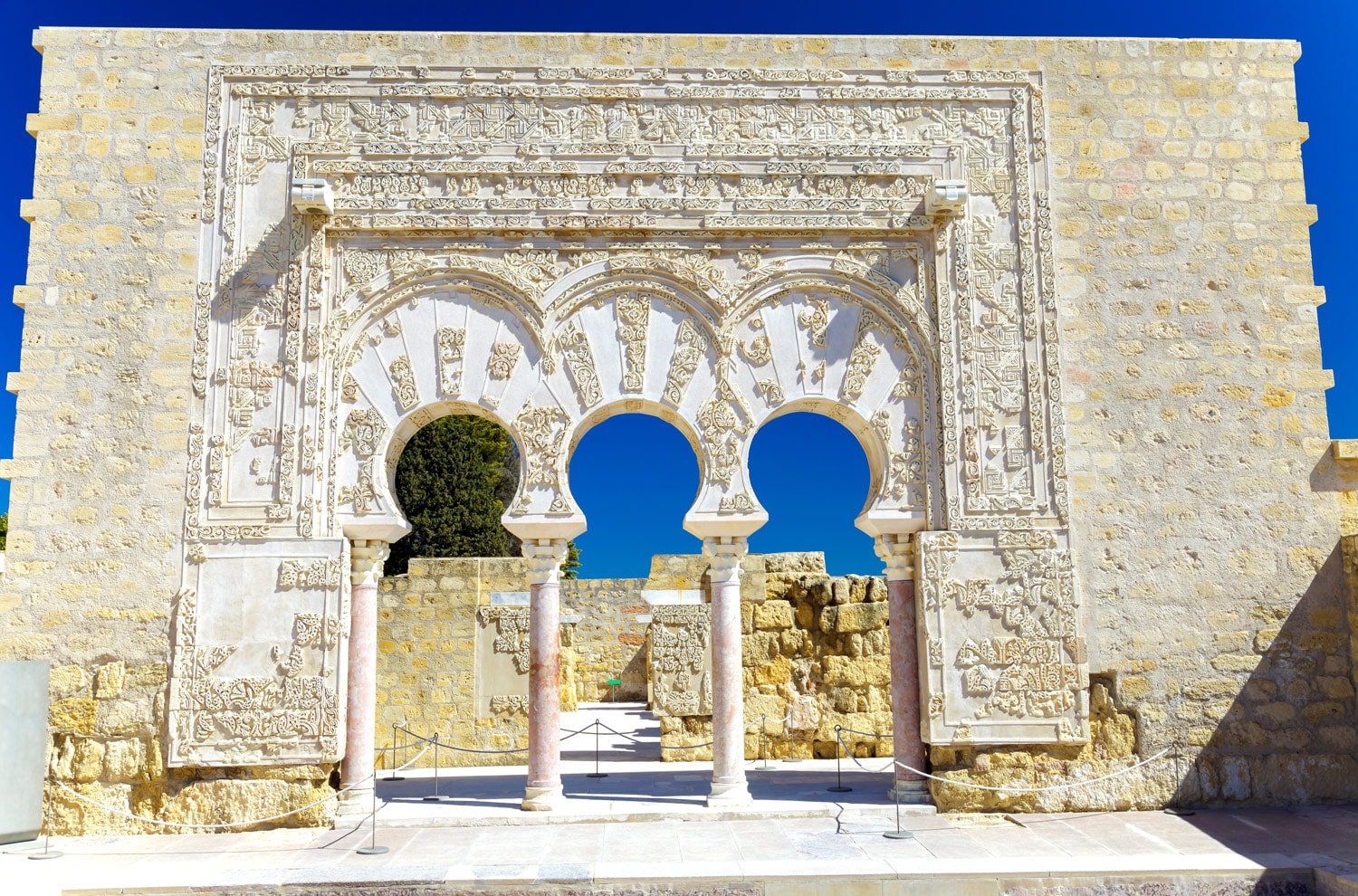
At the foothills fo the Sierra Morena is built Madinat Al-Zahra, by Abdar-Rahman III for his favourite mistress az-Zahra (the flower). The construction was begun in 936 with the help of 10000 men 2600 mules and 400 camels and was completed in 25 years. There are 4300 columns in pink, green and white marble and jasper. The three terraces contained a palace, a mosque, baths, gardens, fish ponds an aviary and a zoo. The Madinat was the capital of al-Andalus for 70 years until 1013, when it was destroyed Berber mercenaries. The royal apartments were rediscovered in 1944 and the throne room was reconstructed. The excavated outline of the mosque reveals that the only covered part of the site is the Salon de Abdar-Rahman III. The tours begin at the museum nearby that provides background information and a 3D reconstruction of the city. The busy days of the bygone era can be well imagined during a walk among the ruins.

